July 30, 2019
Starmus 2019 – from Apollo to Virgo, Buzz Aldrin to Brian May, and exoplanets to extremely large telescopes.
Guten tag folks!
As promised earlier, herewith, a bit lot more detail on some of the presentations at this year’s Starmus in Zurich. The main theme here: the first moon landing.
Quick (relevant) digression: it was our traditional all-day-and-night birthday bash the other week, and since it’s just a few days since the 50th anniversary of the Neil Armstrong’s giant leap for mankind, we thought we’d add a sprinkling of cosmonautical space dust to the proceedings: we invited along two very experienced and very highly-respected astronauts: Oleg Kotov and Sergey Krikalyov. (And let me tell you that both of them have no doubts whatsoever that the Americans really did land on the moon!)
But back to the Starmus highlights. Let me go through some of the best few presentations:
Gerry Griffin was one of the managing directors of the Apollo Program. He was one of the heroes who managed to get the stricken Apollo 13 back to earth safely. A very interesting story – dramatized many times, most notably in the 1995 movie Apollo 13 starring Tom Hanks.
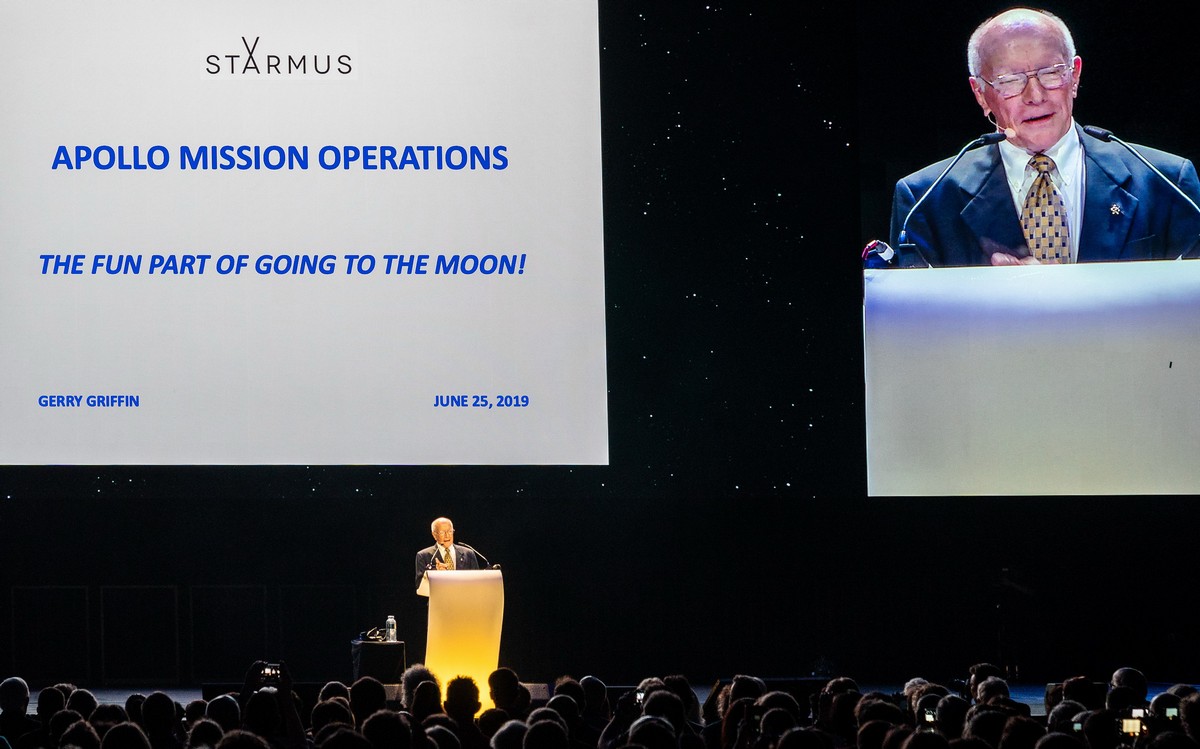
This was a very detailed presentation packed with fascinating info – made all the more interesting by its coming from the horse’s mouth.
Curiously, the flight directors of the mission were all in their thirties – the oldest two a mere 37 years old. Apparently this was no accident: the experts chosen all had sufficient experience but were still relatively young. Quite right too, probably. Well, the proof is in the pudding landing back on earth!
On the third day of the conference, none other than Buzz Aldrin stepped up onto the stage. Oh my goodness – Dr. Rendezvous! Btw: his second name is Eugene!
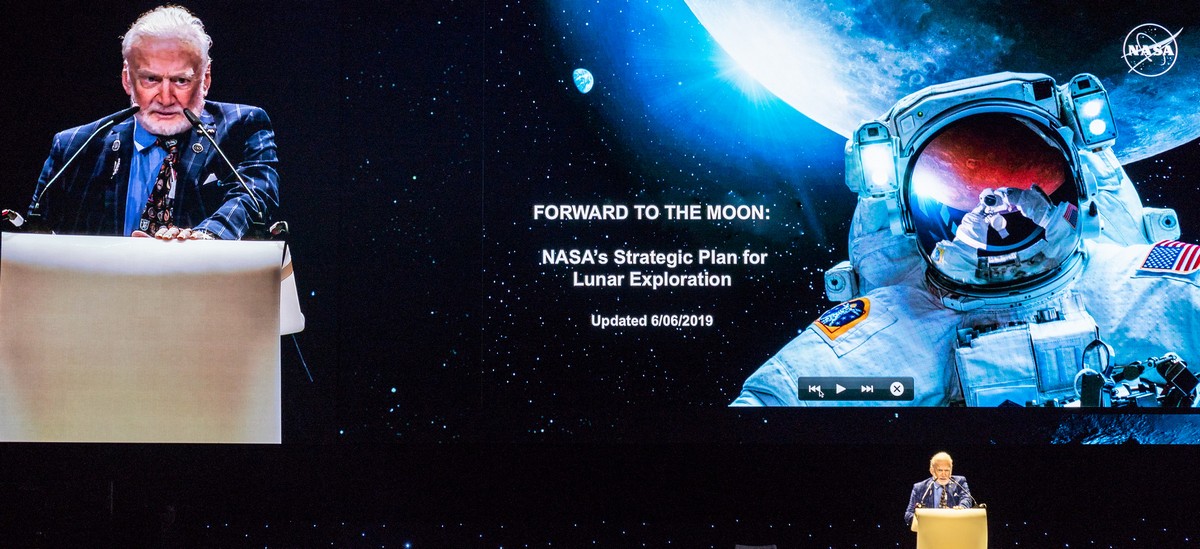
I even got to meet him!
https://www.instagram.com/p/BzIjYBlATZp/
Buzz’s presentation focused on the current Artemis program, which plans to have ‘the first woman and the next man’ back on the moon soon.
‘by 2024’? Not long to go. Let’s wait and see…
One thing though: the Apollo Program’s moon landings served little zero practical purpose. The giant leap for mankind and all that – it was purely symbolic. Sure, it was a fantastic feat, but it was just a PR campaign demonstrating American superiority over the USSR. This might come across as sour grapes, especially now around the time of the feel-good half-century anniversary, but even astronauts and ground crew themselves would admit the same, albeit in private ).
Just in case you’re not convinced: I take my hat off to all things Apollo – one of the most daunting, vast, difficult and risky undertakings ever attempted by man. And one of the most famous achievements of mankind. But what about Gagarin and Leonov?!
Besides Apollo tales – there were plenty of others: about the achievements, projects, plans and dreams of current astronauts, scientists and other specialists (among whom, I remind, included 11 Nobel laureates).
There were the highly entertaining stories of British astronaut Tim Peake, who in 2015-2016 took part in a Soyuz mission and stayed on the International Space Station for half a year.
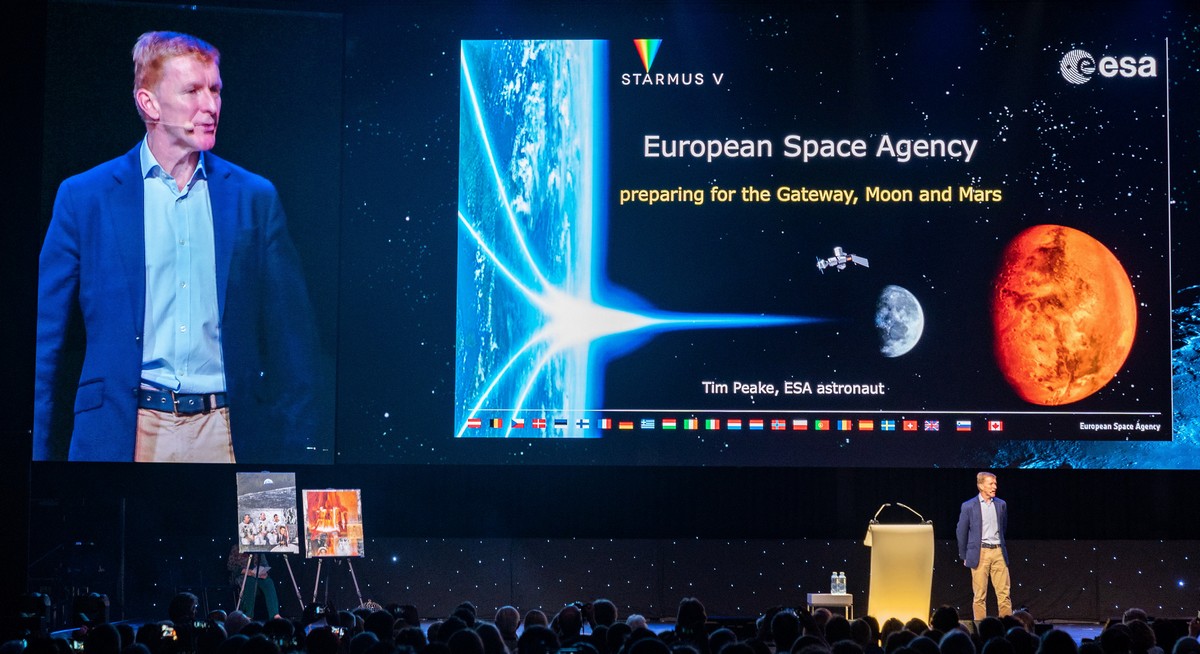
He told us about the practical problems astronauts have while in space. It’s not just the weightlessness we’ve heard lots about before. There’s also the way the skin on the sole’s of one’s feet peels off and leaves smooth skin like that on one’s palms.
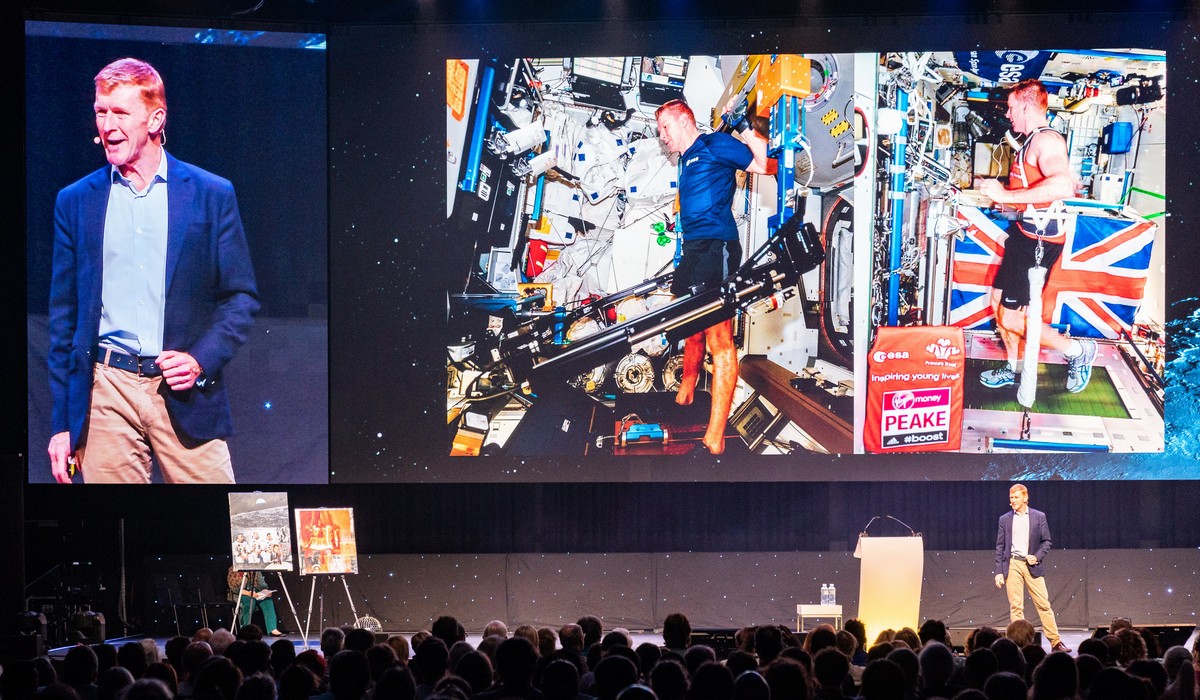
Another problem: at zero gravity the human body stops absorbing essential salts and other vital minerals. At a minimum this takes its toll on the bones: they become weak. What’s to be done about this problem isn’t clear yet…
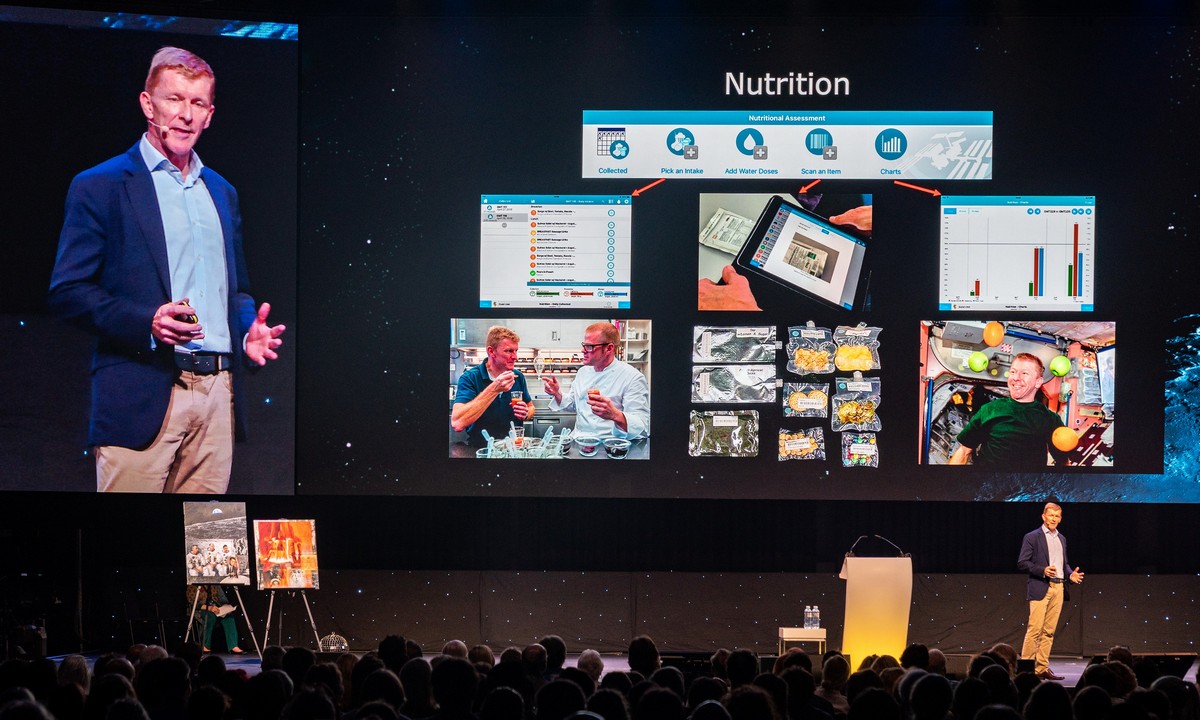
Another problem – living with others in a very small space!
Later, when I was up on stage, I suggested my solution to this problem: make sure everyone has good, free Wi-Fi! This went down well, met with much applause ).
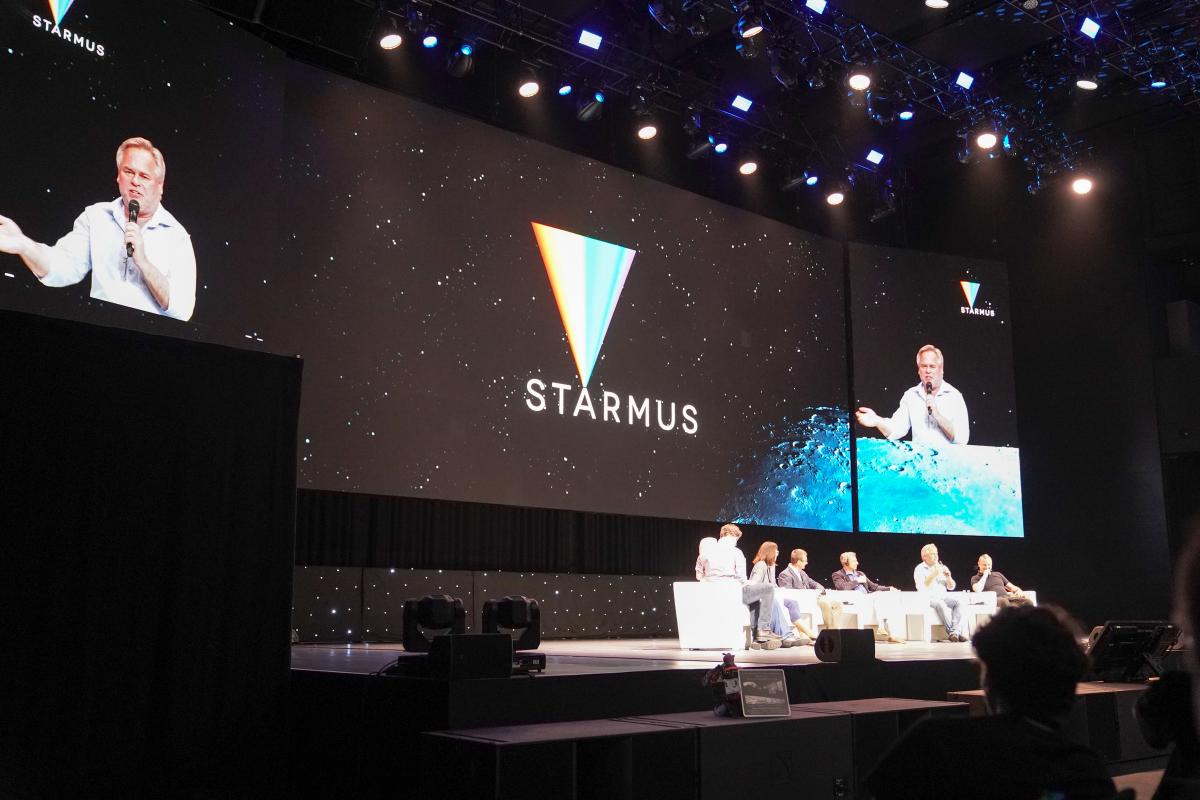
Another problem: regeneration of air on the ISS.

Finally, Tim told us about Europe’s projects and plans:
Very ambitious plans they are too!
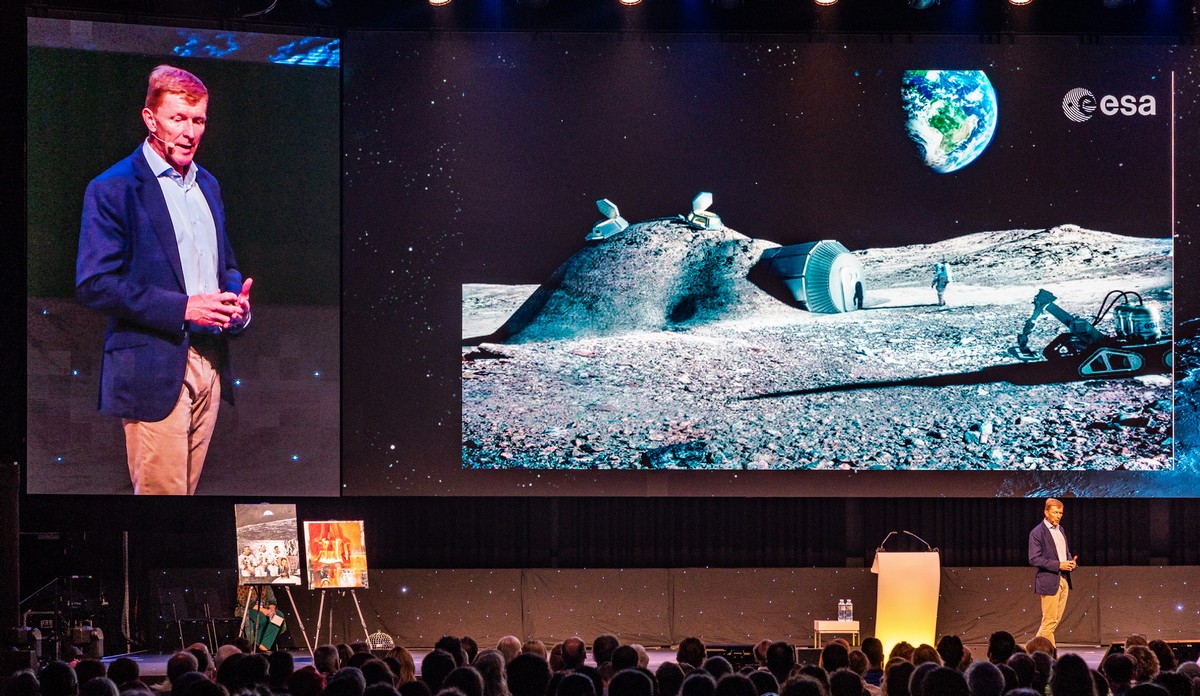
Briefly – the private sector’s space programs.
Sure, I think they’re more than capable of space missions, but maybe not so far away. Long-range adventures – surely they’ll need state/international support as the costs are astronomical ). Still, folks like Robert Smith of Blue Origin did a good job convincing us that the sky outer space is the limit for the private sector!
Next day – first up: Brian May. Yes – that Brian May ). So, Brian May with his astrophysicist hat on showed us his space project – involving the London Stereoscopic Company. What they’re doing is searching archives, finding pairs of old photos that are similar, and somehow making 3D images thereof to bring them to life. Of course, they need viewing through special 3D glasses:
I wonder, did we take two pics like this? This in 3D would be worthy of my office wall space ) ->
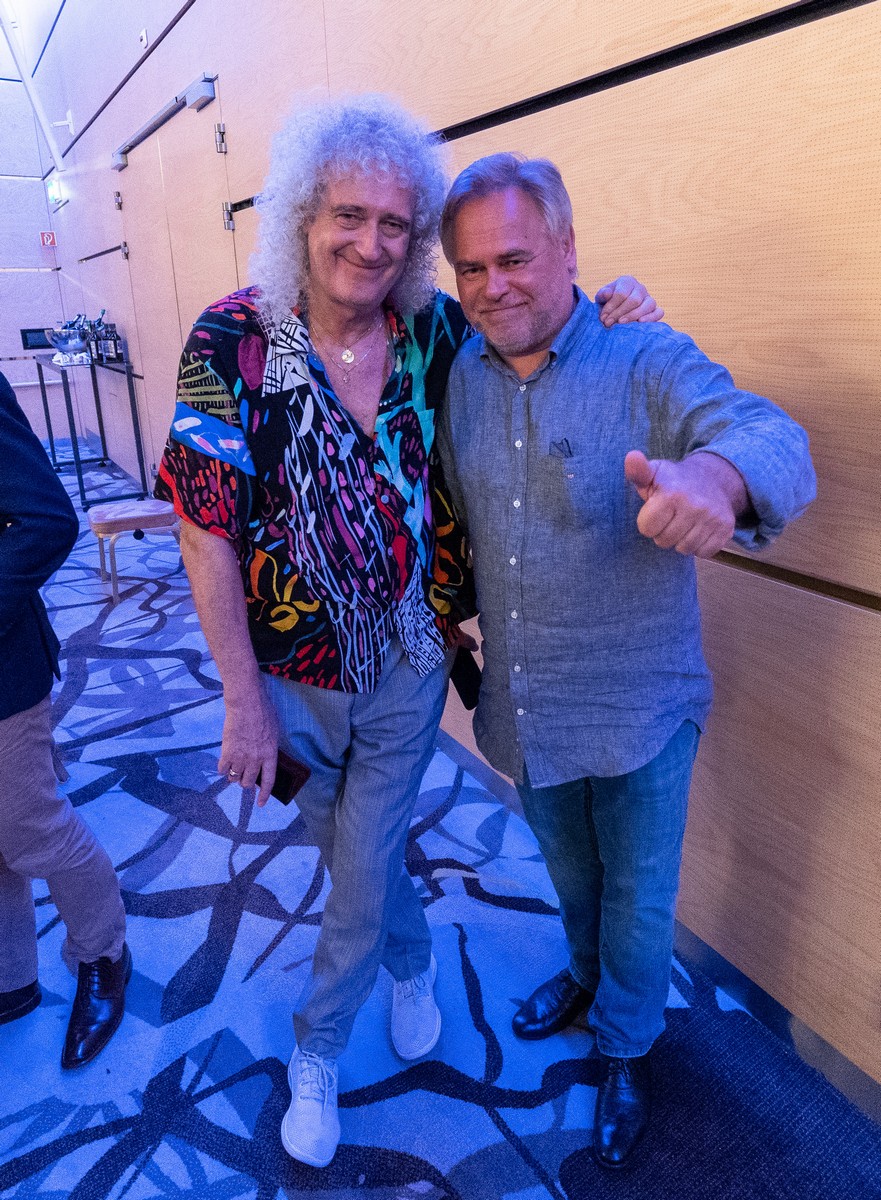
Next, Starmus took a sharp turn toward fundamental science. Fabiola Gianotti (Physicist, CERN, DG) gave the next (lively and jovial) presentation – all about the work of the CERN laboratory. I was there myself several years ago and was told similar tales, but hearing more was most enjoyable.
One thing that stuck in my memory from this presentation was the quote: ~‘Everything in the world – even Donald Trump – is made up of quarks and electrons’ ).
What she had to say about practical applications of obtained knowledge was most interesting, for example in oncology.
Next up: Canadian optical physicist and Nobel laureate Donna Strickland talking modern lasers, research and scientific victories. But it got rather deep and technical; I’m afraid I didn’t understand half of it!
Next, Adam Riess, American astrophysicist and Nobel laureate. Told us about his theory that expansion of the universe is accelerating, for which he earned his Nobel prize.
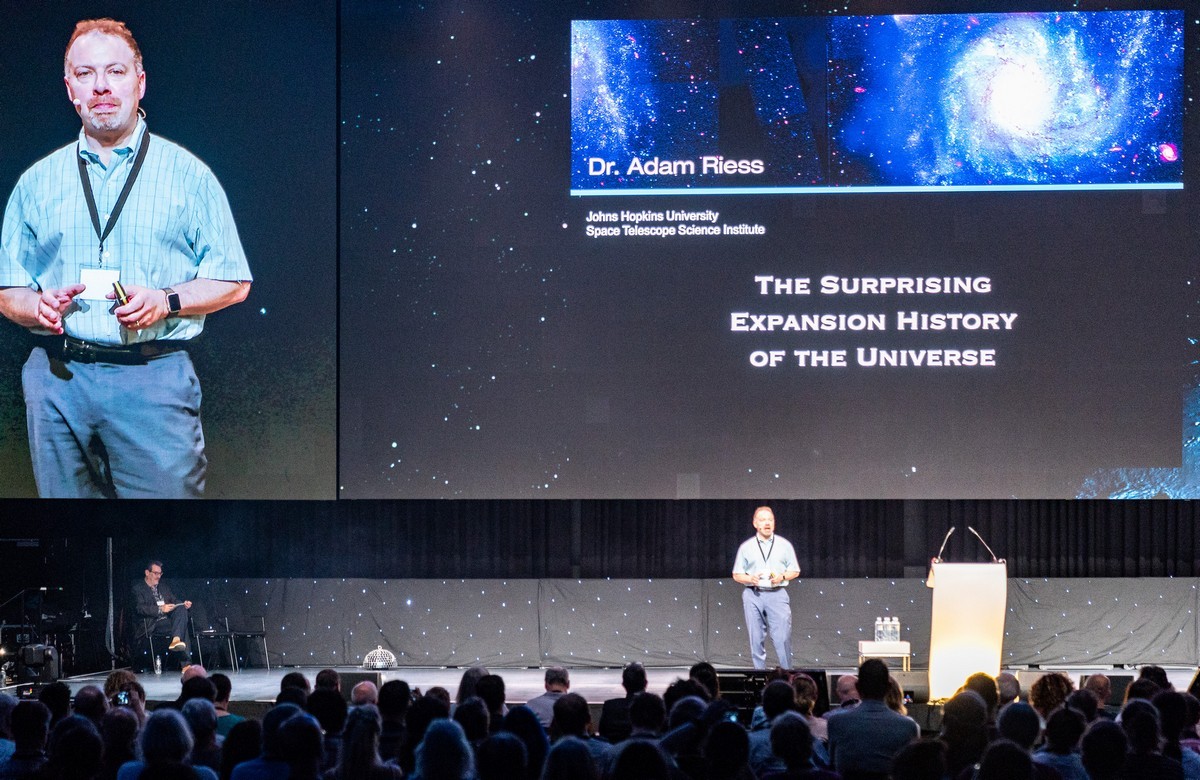
Check out the slides for some history of the universe that will make you feel very insignificant:
Phew. Tough-going. But fascinating…
Next assorted fables and curiosities about the Hubble Space Telescope (just in case: not to be confused with the Large Hadron Collider:). Straight off the bat, let me tell you about the curiosity that stood out for me most of all: it has cost eight billion (!) dollars to date!
What this mega-telescope does is observe things in space that can’t be observed from Earth’s surface due to atmospheric interference. So it’s up there, in low Earth orbit, with astronomers taking turns in accessing it for their research.
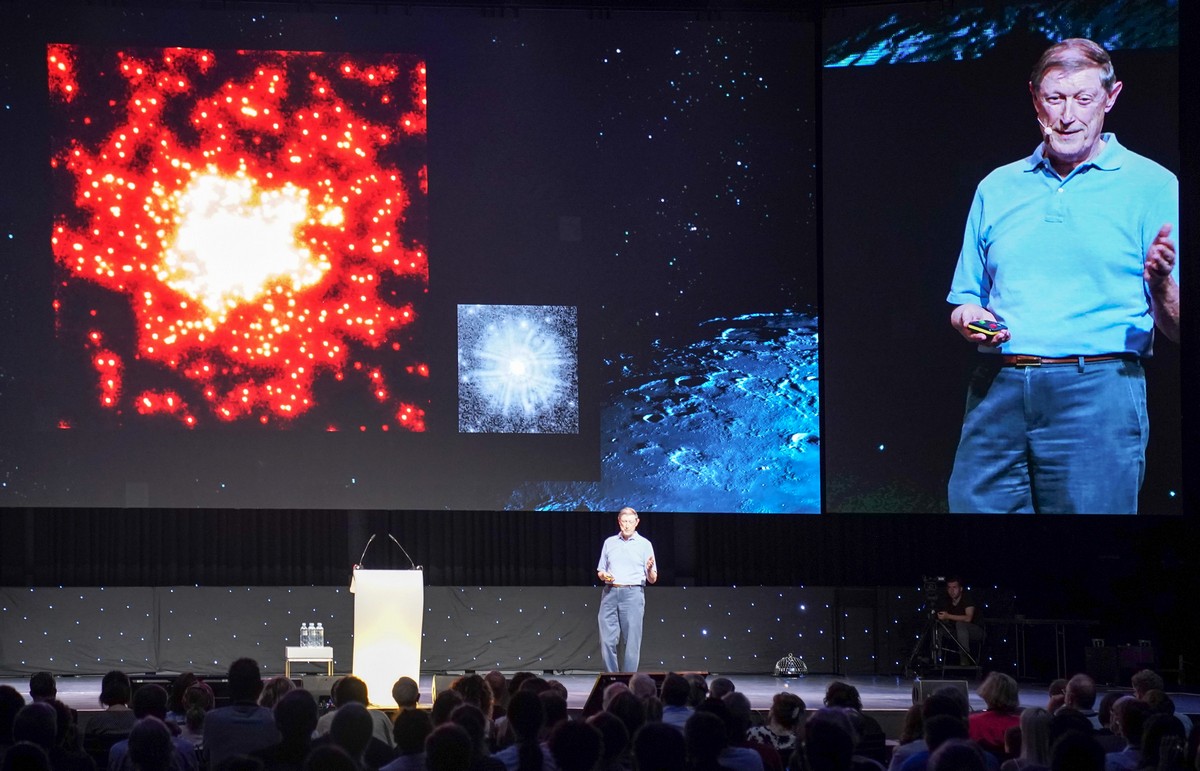
Early on, things didn’t go so smoothly for the mega-scope: the photos it took weren’t clear at all.
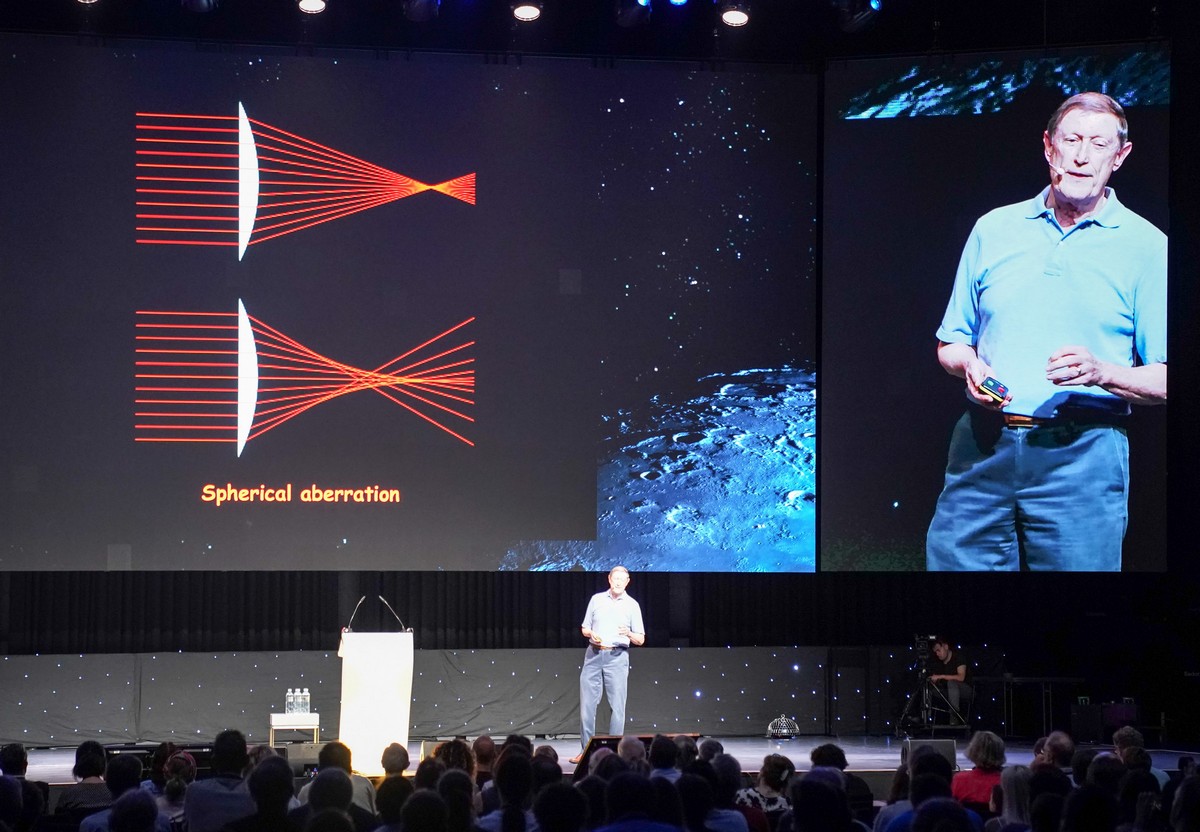
Things were eventually straightened out – as were the pics taken ).
It’s regularly serviced:
Here’s one of those servicing missions. What a pic!
One important thing the telescope-in-orbit is interested in is the history of the universe. What, how, when, where, how far/how long ago – all this can be approximately worked out by observing infinitesimally distant stars and galaxies. It also studies cosmic microwave background radiation.
Toward the end of the presentation we were shown this here model of connecting two spiral galaxies into a single elliptical one:
Next, physicist and astronomer Xavier Barcons telling us about the European Southern Observatory situated high up in the mountains above the Atacama Desert in Chile (a place I’ve long dreamed of getting to).

Sure it’s a long way from home and literally in the middle of nowhere, but they’ve managed to pull off some serious astronomico-observatorial feats based on their unique kit up there in the mountains.
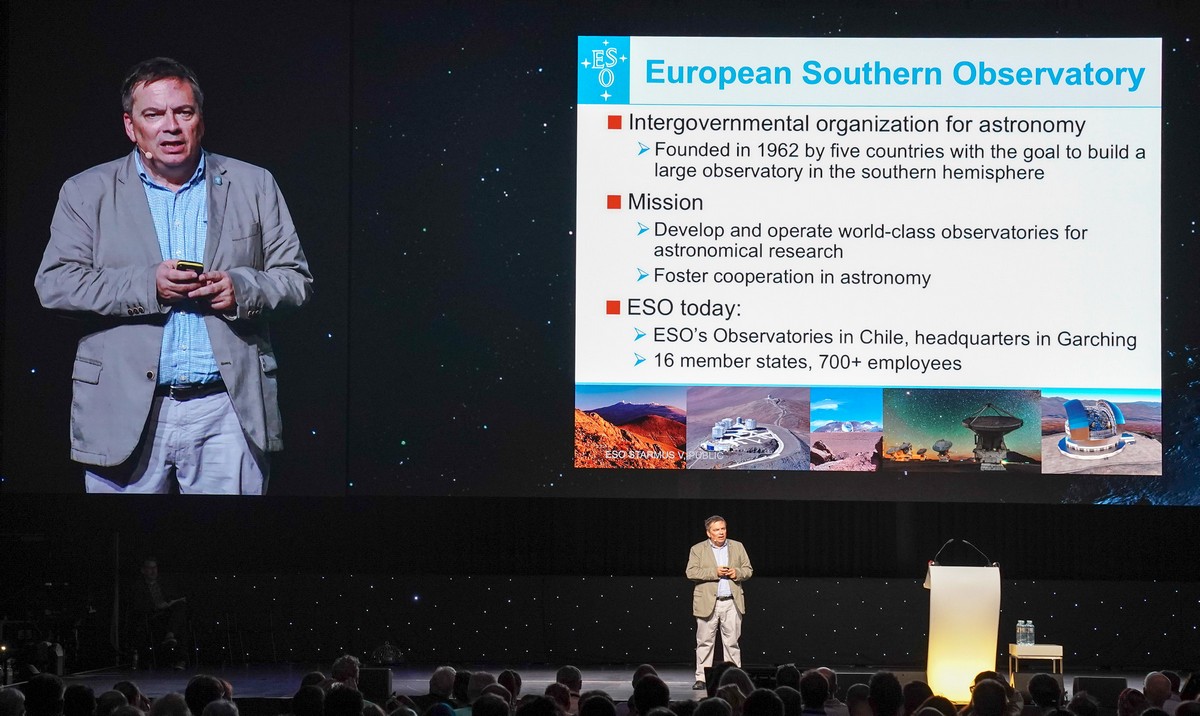
Hmm. So why Atacama? Well, turns out there aren’t that many locations on the planet that have an ‘astro-climate’ suitable for super-observatories. Besides Atacama there are just Hawaiian and Canary Islands‘ volcanoes, plus a similarly suitable spot in Tibet.
In Atacama there are actually two observatories: La Silla and Paranal
He showed some awesome pics of one of the observatories snapping the other, with obligatory moon-photobomb!
You’d think they might have been content with their very large telescope. Apparently not: currently being built – an extremely large telescope (mirror diameter – 40 meters!).
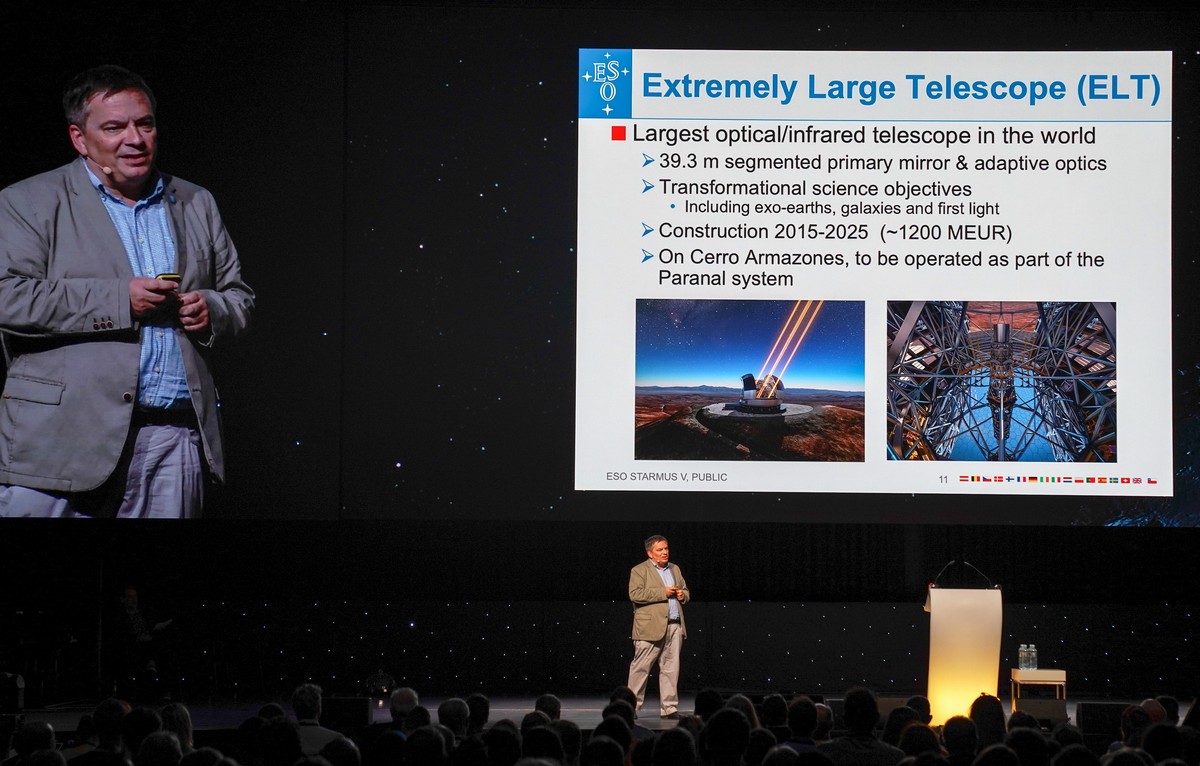
They’re already well on with laying the foundations:
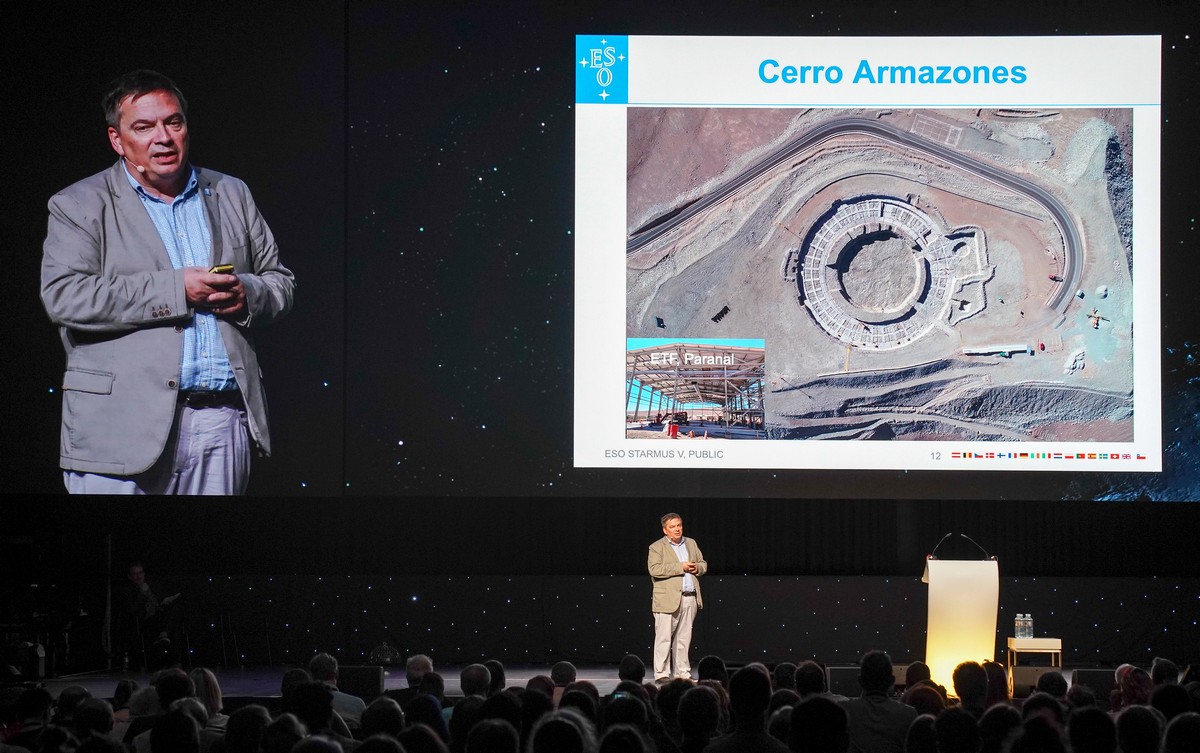
The deeper we go, the more we see – including exoplanets, gravitational waves and black holes! Oh my galaxy!
All rather mind-bogglingly fascinating. In my next life – if I’m given a choice – I think I’ll be an astronomer ).
Alas, not all the presentations were fascinatingly mind-boggling. Some were more than a little dull, and had a whiff of modern-day geopolitical agendas, or just too much boring jargon for comfort.
The above slide – see the glaring elephant (clue: bear:) not in the room on that slide? I’d like to ask this American astronaut: the national space program of which country – which isn’t even in your list there – is sending up to space American astronauts? For years already? ). Disappointing. Same old, same old…
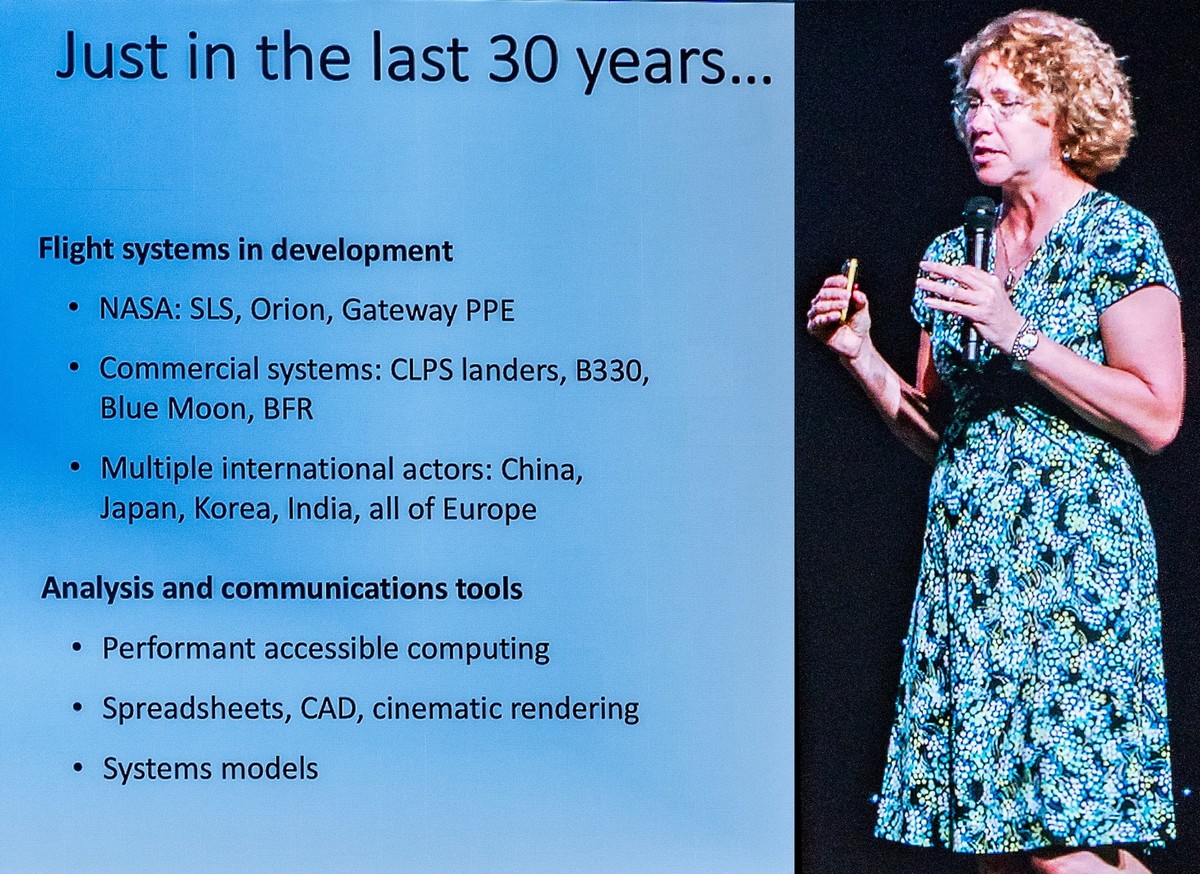
Have I still got your attention stargazers? Then I’ll continue…
Another interesting – albeit it a little too simplified and brief, IMHO, for Starmus – presentation was that of the president of the International Astronomical Union, Ewine van Dishoeck.
I agree that over the last hundred years astronomy has advanced in leaps and bounds, helped by modern technologies and large budgets. We’ve learned much more in those hundred years than in all previous years – about space, galaxies, the Universe, everything. Gravitational waves too…
Predicted more than a hundred years ago by Einstein, and ever since having been researched, and 99 years later, in 2015 – woah – they were finally discovered (and presented to the Starmus audience – including moi – the following year). What I didn’t quite get was what this had to do with traditional astronomy. Well, I guess there are different kinds of astronomy – not just optical. There’s also: infrared astronomy, radio astronomy, and many others. Well now there’s gravitational-wave astronomy too.
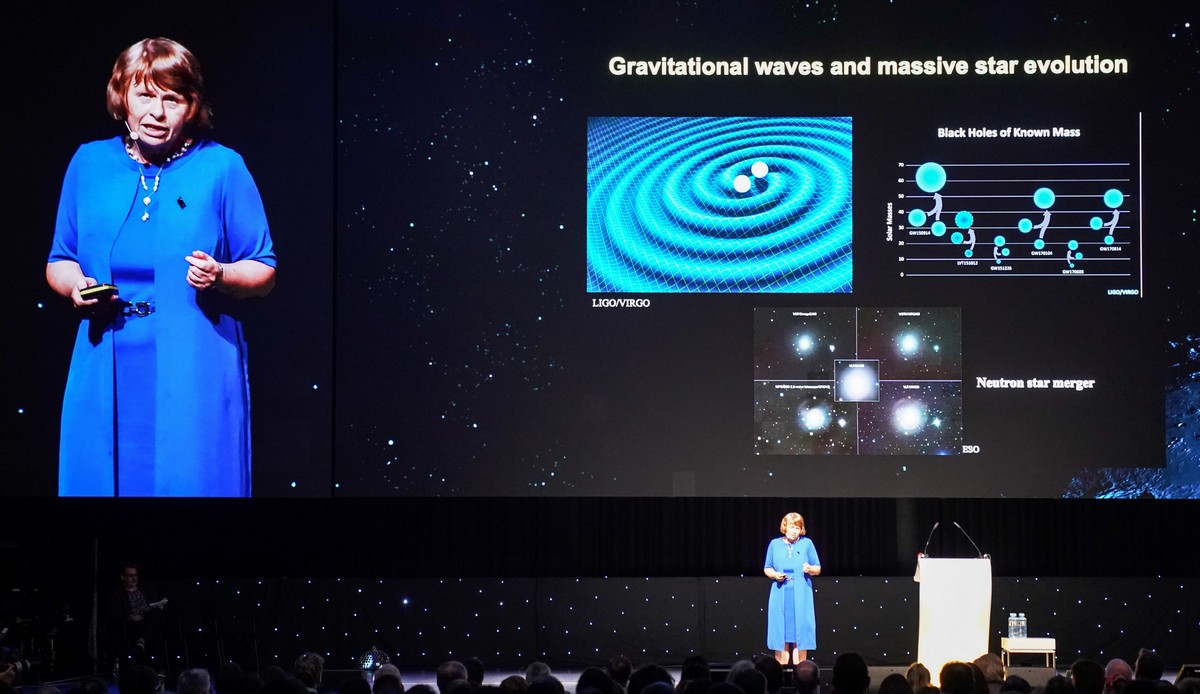
She went on – to the topic of exoplanets! These are planets outside the Solar System. More about these a little later…
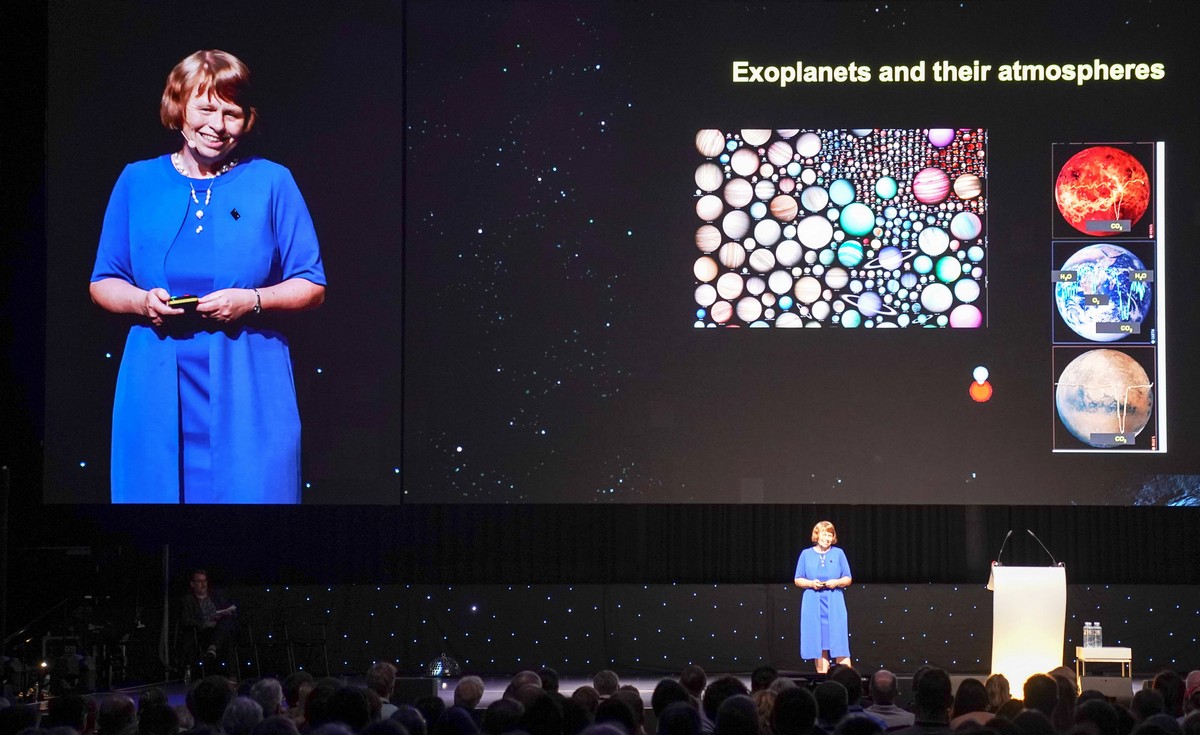
Astronomers are discovering more and more complex molecular compounds:
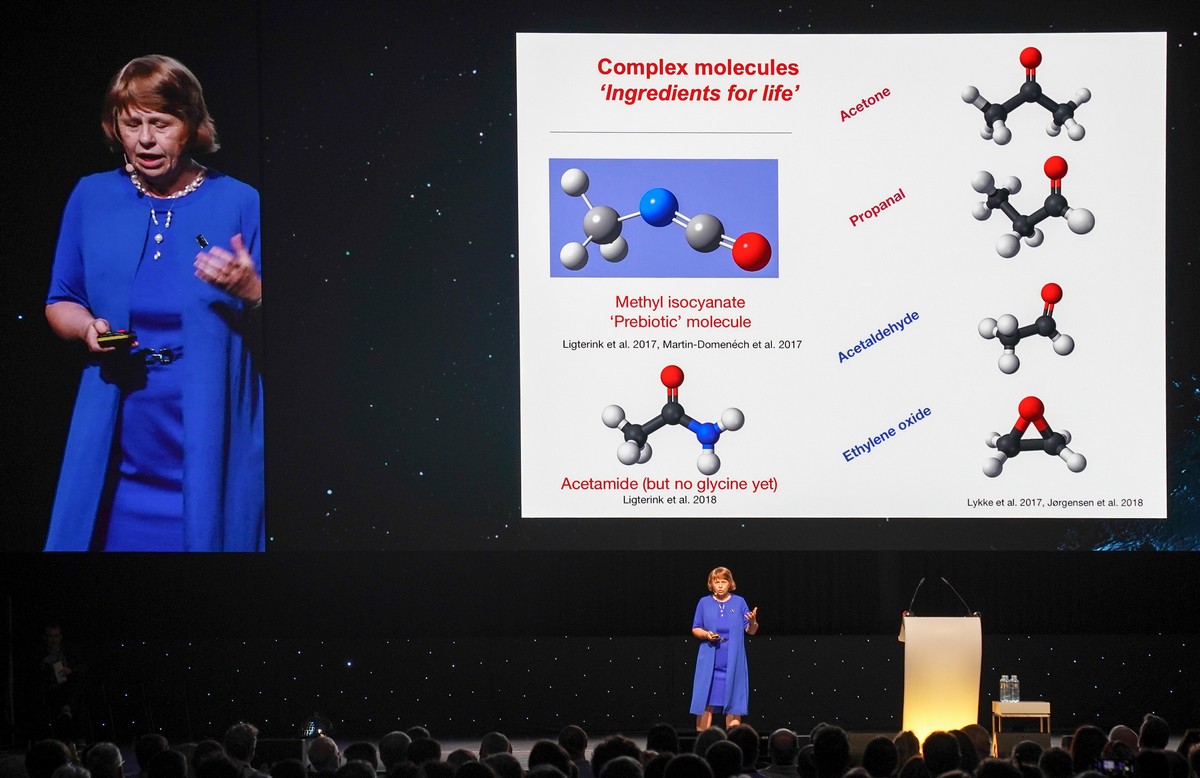
They’ve even found alcohol! Yes – really! Still, the rest of the cosmos is seriously lagging behind Earth’s lead, with its 40+% liquors: so far only 2% proof has been found ).
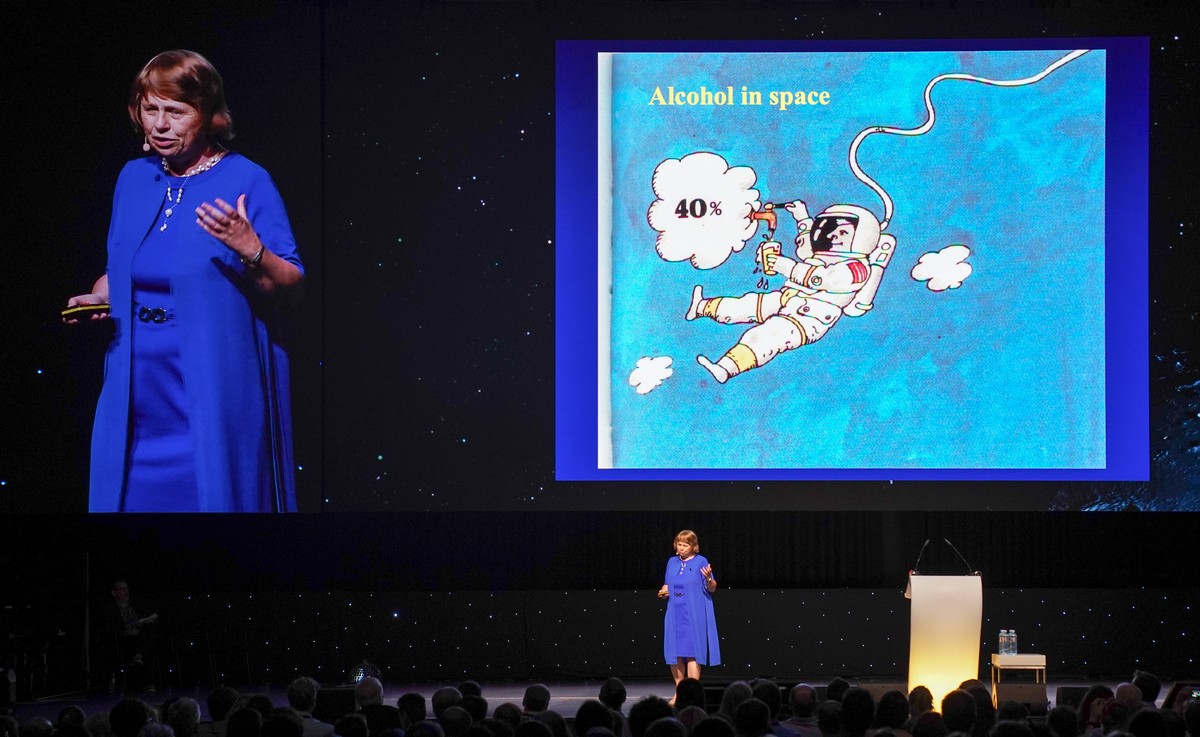
Next up – an astronomical history lesson – seemingly for children, but I didn’t see any in the audience ).
And for dessert – the coming 100 years. Most interesting: dark matter and dark energy…
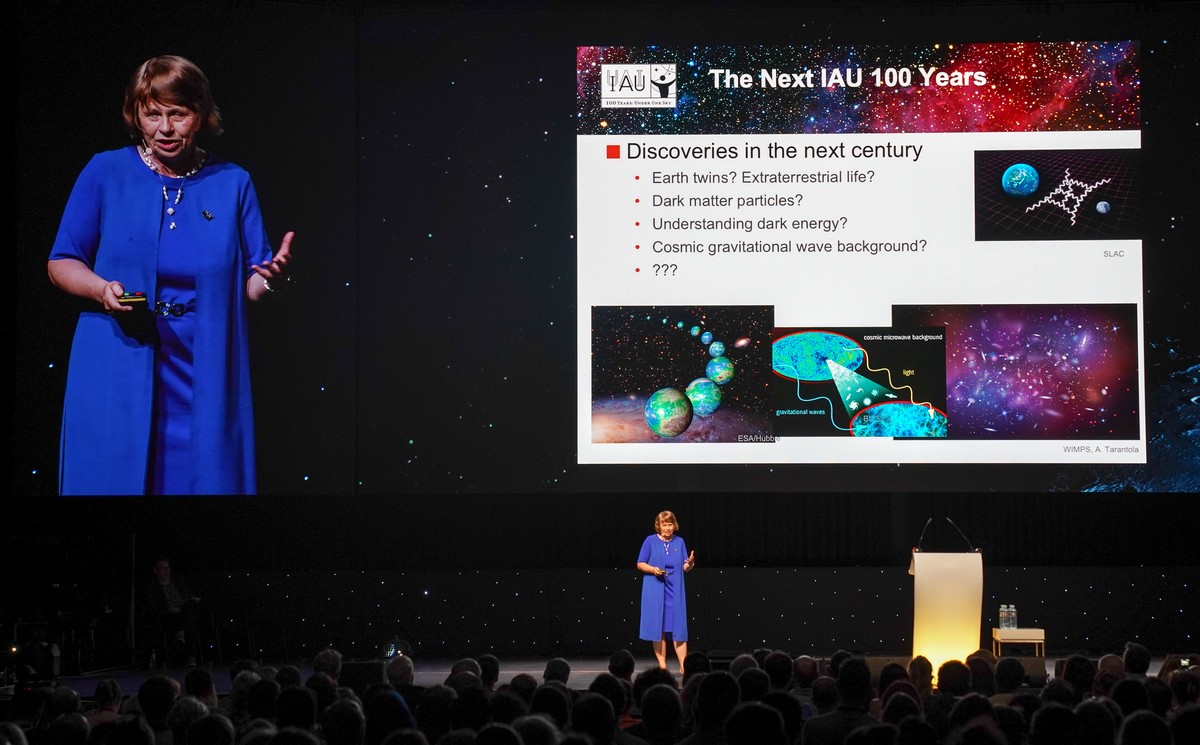
Next up – time to turn the tables ‘scopes upside-down and examine inner space – microscopically – inside our cells. American physicist Eric Betzig told us about a project working on super-micro technology called PALM that’s seeking increased resolution in filming pulsating objects, for example proteins (why particularly proteins I didn’t quite catch, but all the same it was wholly interesting).
Deeper and deeper…
Funny guy too. I recall him telling us how the ‘stars aligned’ for him and his research partner. They were at one point both out of work, Eric having recently been fired from Bell Laboratories, but met up, used some of the kit he’d taken with him from Bell, and after installing it in his pal’s living room, hit upon their groundbreaking findings ‘really easily’ … ~’we really couldn’t believe no one else had hit upon them before!’
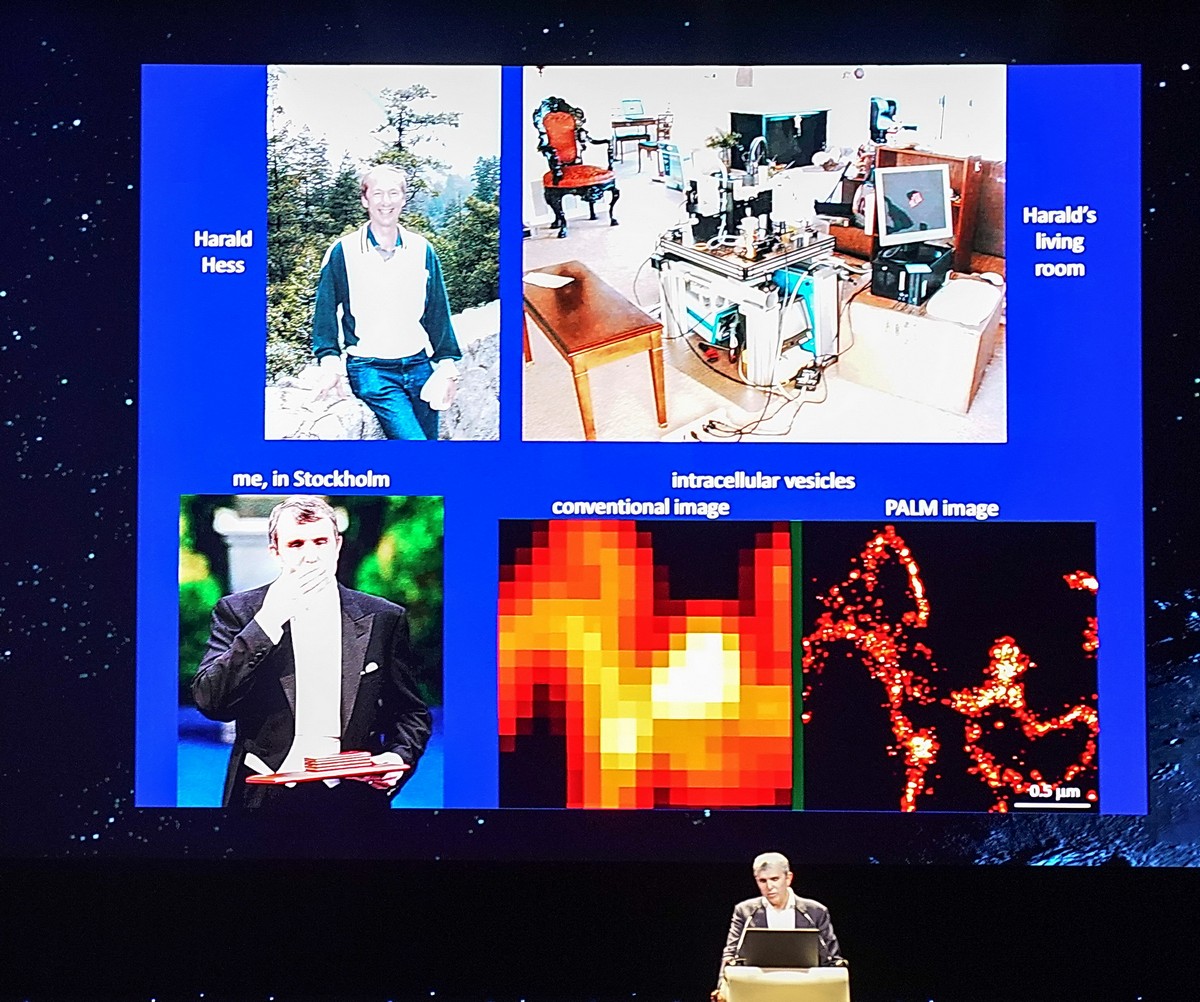
So, using the tech they hit upon they’ve been going deeper and deeper inside things like proteins, found all sorts of interesting stuff, improved medicine – and received a Nobel prize for their efforts.
Btw, they reckon their ‘adaptive optics’ technology could be applied in astronomy for improving the quality of space photos, plus in other microscopy projects.
But it all got a bit too complicated toward the end. If any of you, dear readers, knows all the ins and outs of these guys’ research area and can explain it in layman’s terms – please do so in the comments!
Next up – Brian Schmidt‘s tales of the universe and its long history. He also told us how the last 100 years have changed everything in science. And the hypotheses put forward around the beginning of the last century have all been either confirmed or rejected – that is, if they aren’t mistaken.
Check out the question at the bottom of the slide in the second pic:
Well, surely it’s obvious? Whenever there’s a big bang of any sort – it’s never just the epicenter that’s gets blown to smithereens now is it? There’s always collateral damage nearby. That’s where they come from!
But seriously, to really get to the why’s for black holes, they’ll need to get further and further away – actually: further and further back in time! – to the time when those stars and galaxies gave off the light we see now:
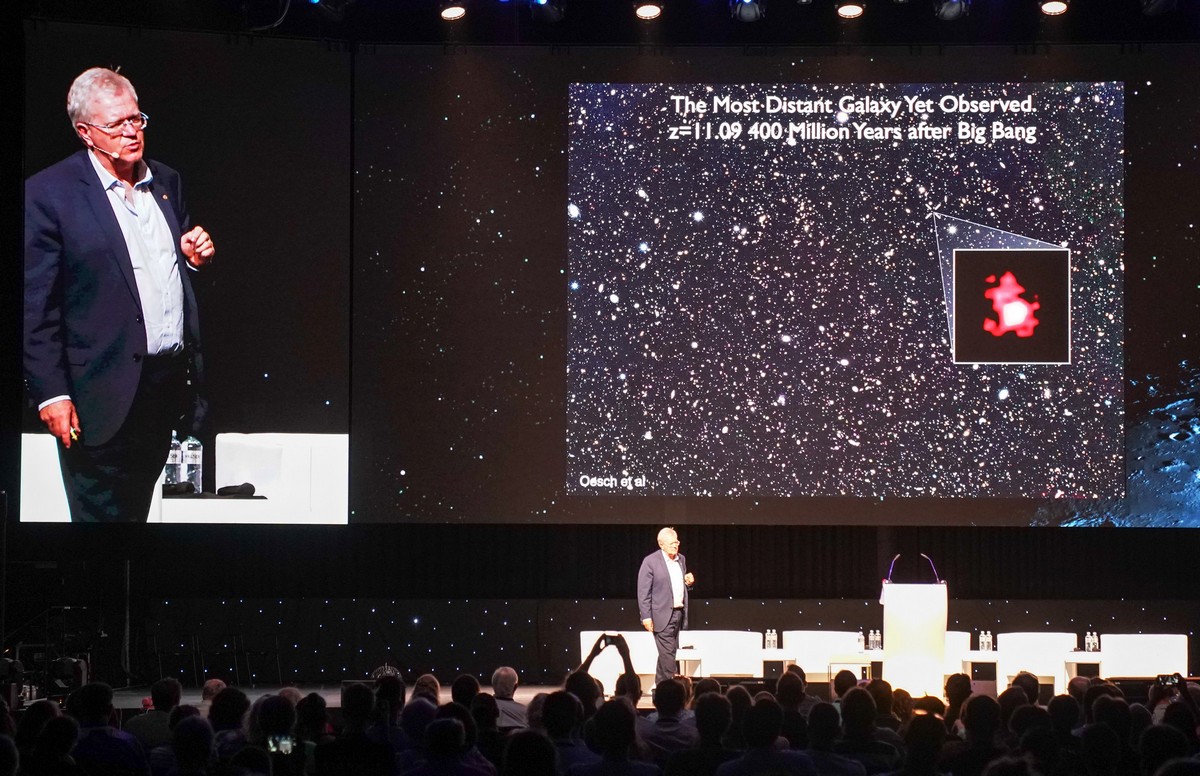
And then add what we find to what we already know about life, evolution, death and other space phenomena.
And try and find the oldest stars:
And the research knows no end, since we are a mere blip. We – homo Sapiens – only started looking up at the skies at night hundreds of thousands of years ago, while the stars in those skies are already around 14 billion years old (if the scientists haven’t gotten it wrong).
And a bit of trolling at the end – if only to give a jolt the somewhat already fatigued evening audience ).
They say it’s best to save the best till last. Well Starmus clearly thinks so too, for on the final day of this year’s Starmus was (to me) one of the most interesting of all the presentations – that of Natalie Batalha – professor of astronomy and astrophysics at the University of California, Santa Cruz – on exoplanets. I enjoyed every minute as it was so insightful, and of course it’s always best hearing it not directly from someone directly involved.
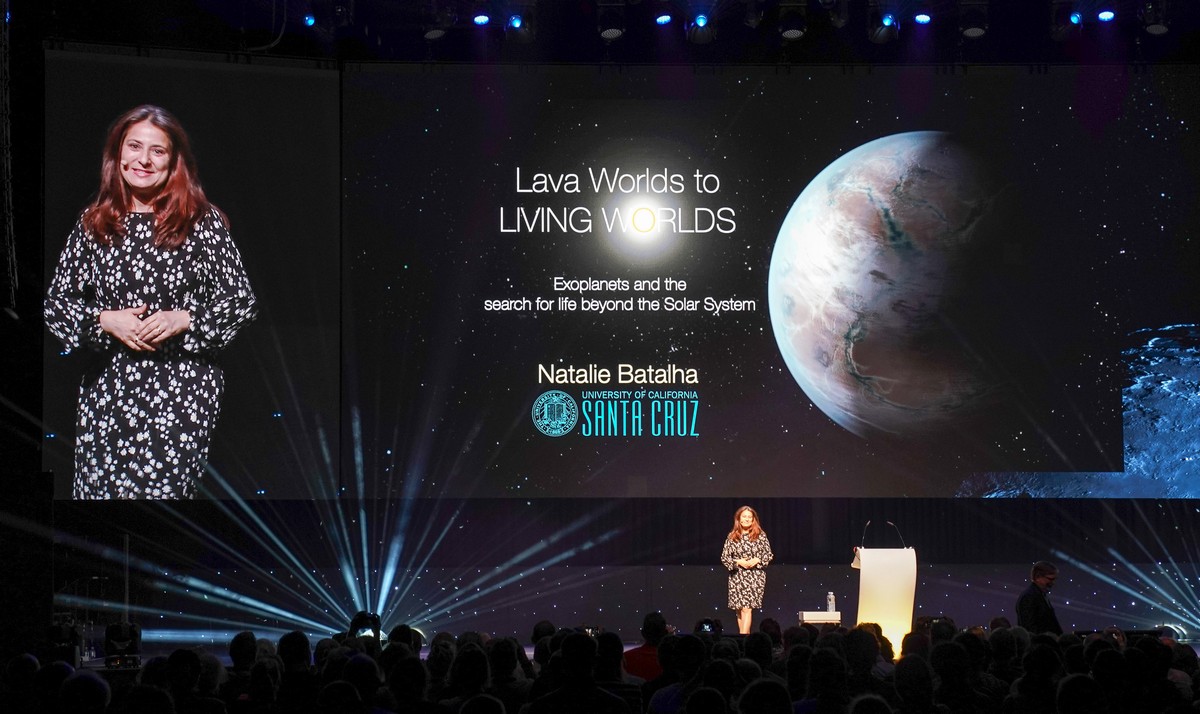
Yes, exoplanets fascinate me. Here’s why…
Exoplanets are planets outside the Solar System – a long way from it, actually. But how can we detect such planets as these? This is where modern science comes in with all sorts of tricks and gimmickry. For example, if a star is unstable and bobbing about, this probably means that something nearby is forcing it to do so; for example, some kind of planet – a gassy giant one like, say, Jupiter:
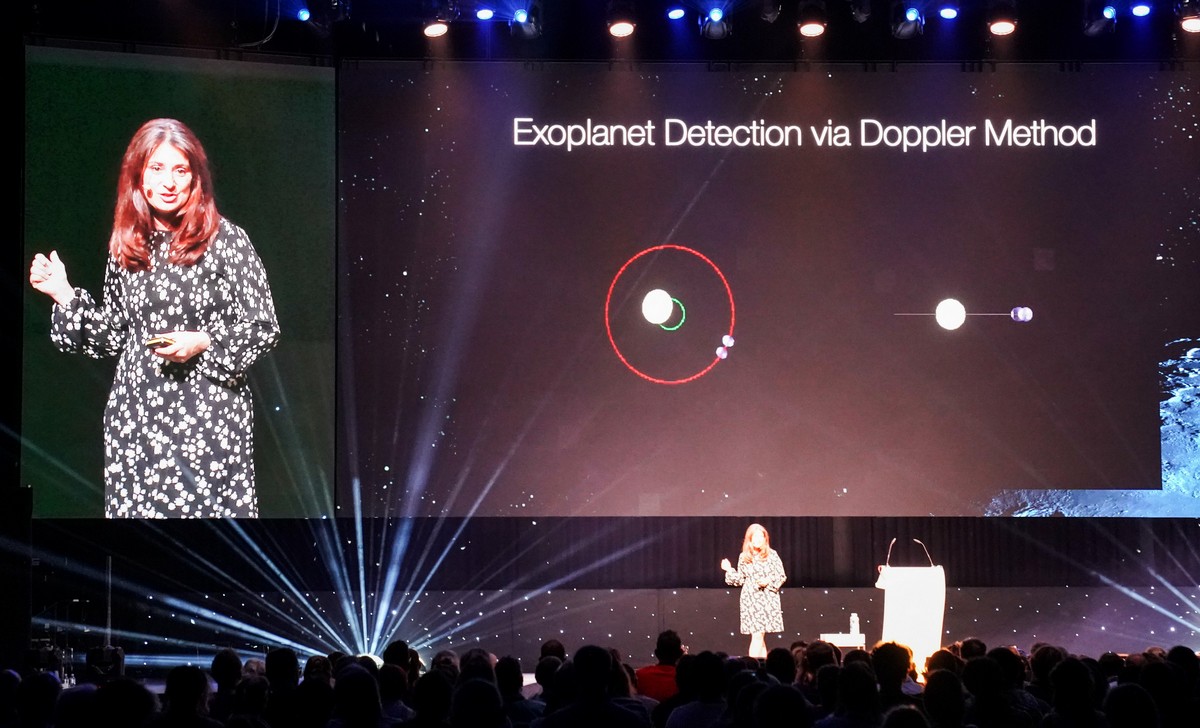
There’s another method, requiring mega-accurate optics: if a planet crosses the visible disk of a star, then it will somewhat dull the observable brightness:
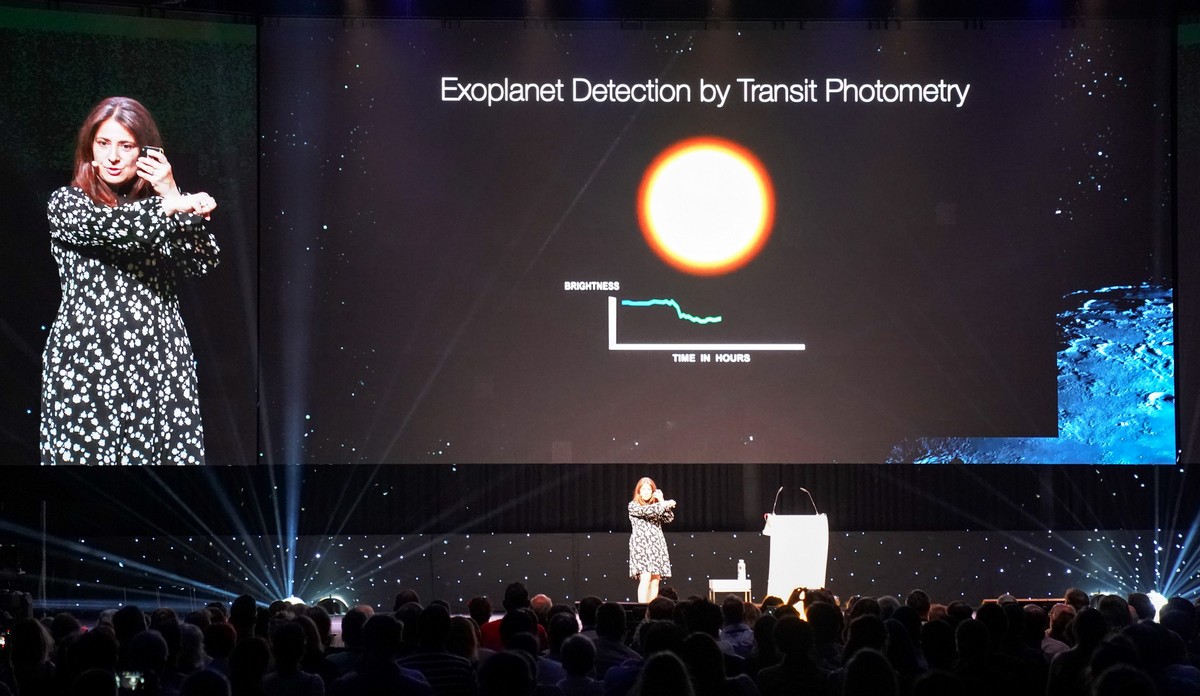
The mega-accurate telescope is the Kepler space telescope, which cost billions to develop. No other country puts so much money into space exploration and research as the U.S. does, so hat-off. However, the Chinese are doing their best to catch up…
Here we have optico-computero magic and wizardry…
At first the project couldn’t get off the ground due to lack of funding. They asked for investment once – and were… politely shown the door. They asked for funding a second time – door again. Third time: door, and on and on and on, until the umpteenth time – and they were granted the money! A while later – and up went the super-scope into orbit. And look at the results already: all these exoplanets discovered up to 2009:
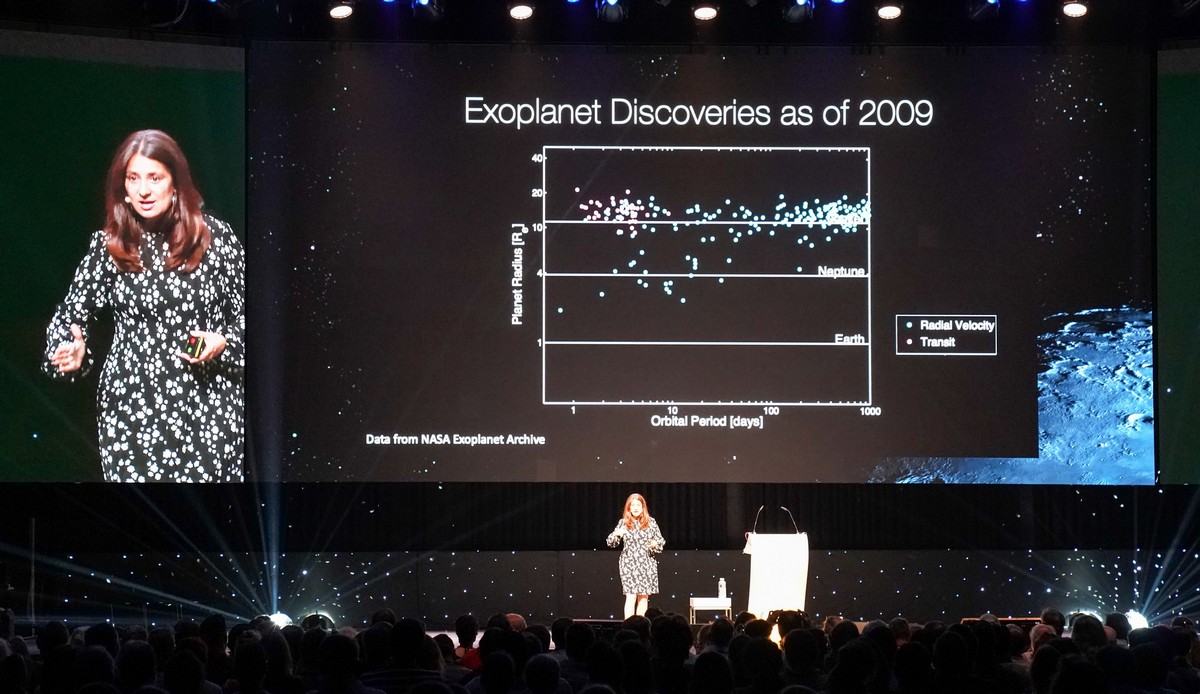
Today more than 4000 are known of [applause > standing ovation!]
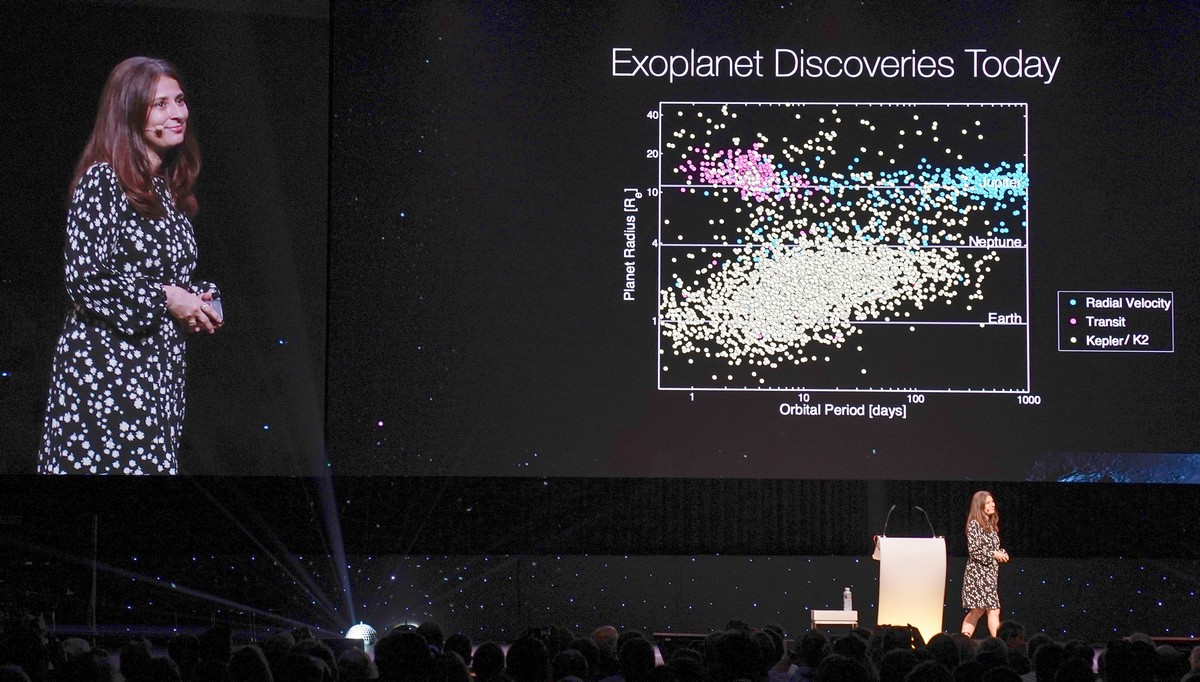
Here’s an interesting fact:
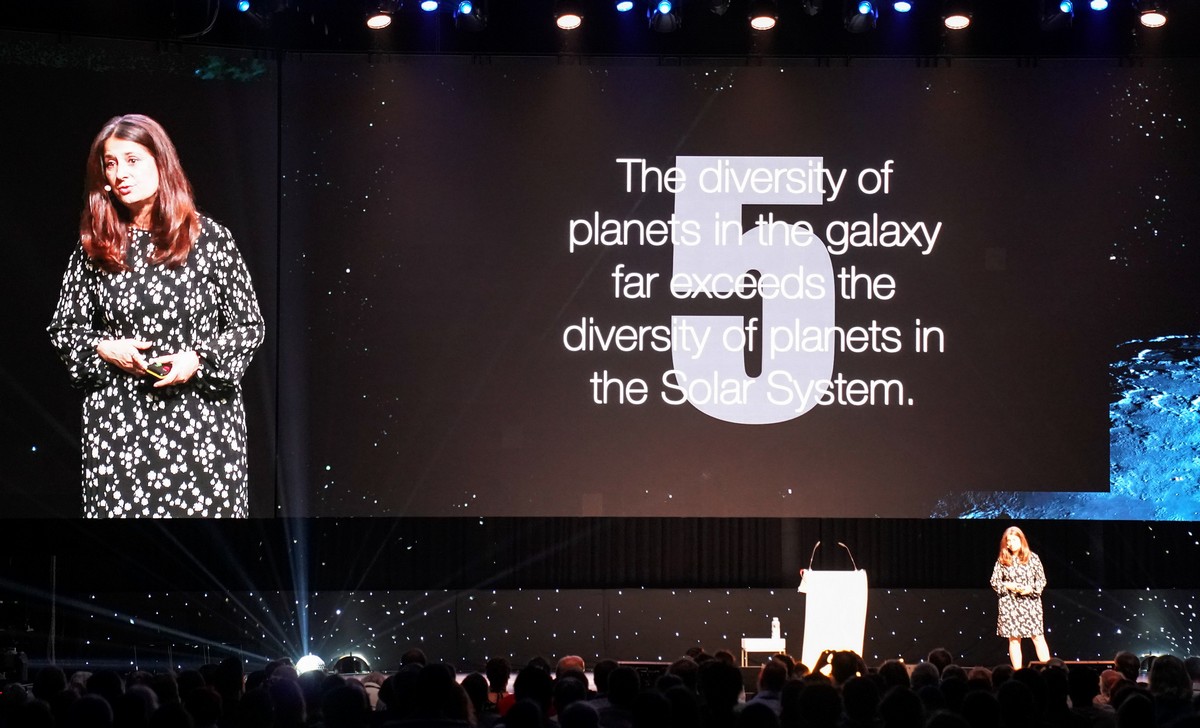
There are stars that are too near stars; they are probably covered in oceans of molten material. There are planets that are still being formed. There are planets with a tail like that of comets. And so on and so forth. Oh, and the total number of stars – giga-mega-trillions; and that means ziga-zega-zillions of planets surrounding them all too!
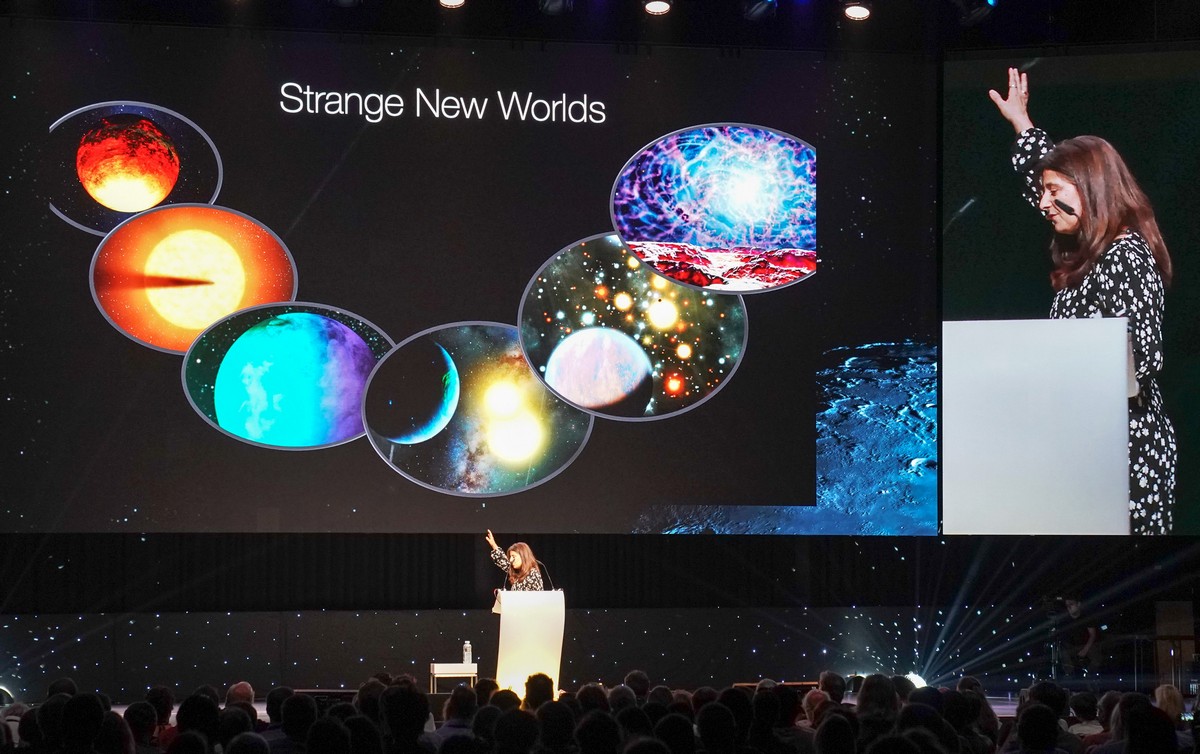
The astonishment factor only increased! Most of all were found planets that are nothing like the planets in our Solar System…
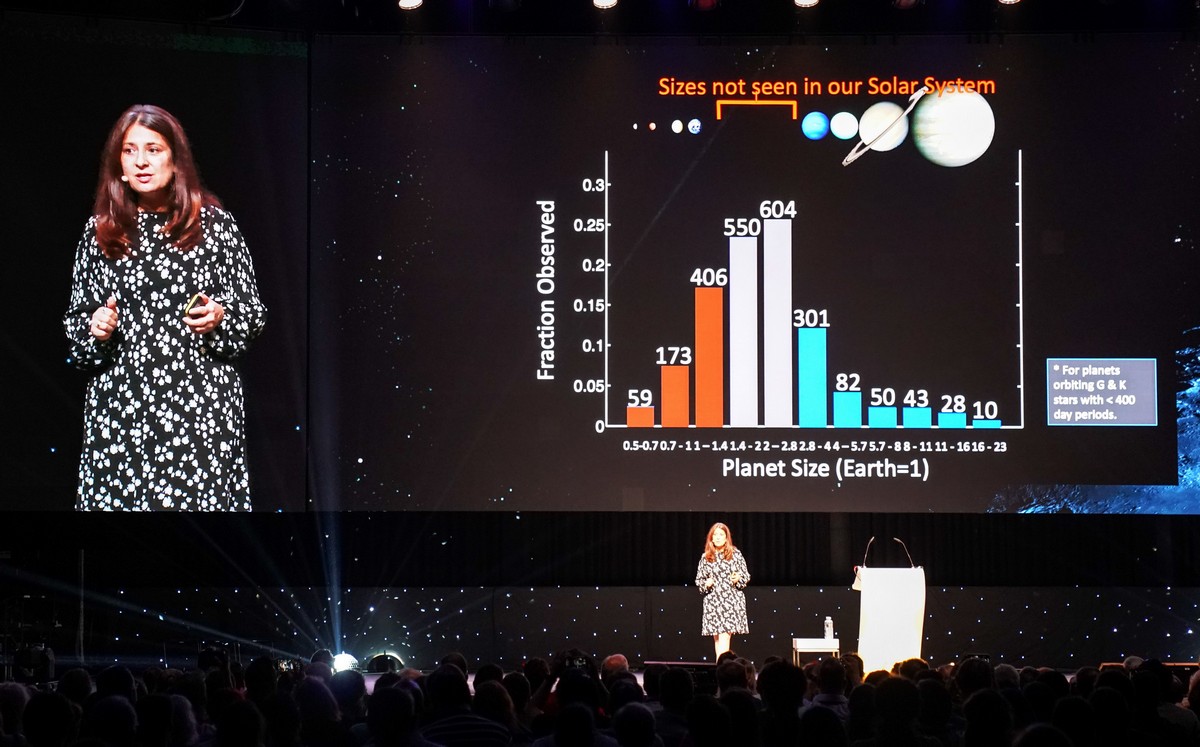
Another ‘oh my galaxy‘:
Suddenly:
Now the next tasks are as follows:
- Find planets that are habitable;
- Search for signs of life there!
For the latter they first need to research the chemical make-up of planets:
Then they need to point the mega-scopes to a particular planet for closer inspection. And who knows what they may find. Maybe intelligent life similar to what we have here on Earth?
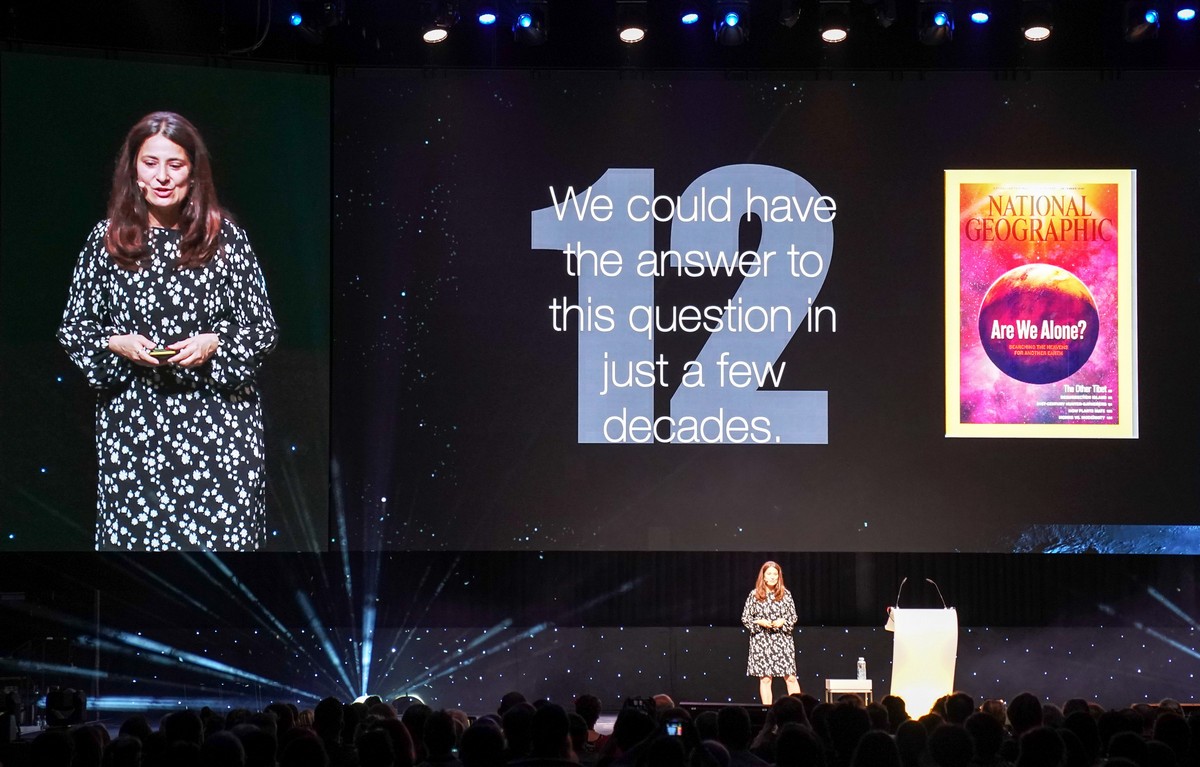
This got me thinking/imagining…
Imagine the scene one day – maybe soon: an astronomer sitting one night with her eye to the viewfinder of a humungous, super-powerful telescope, trained on an Earth-like planet in a Solar-System-like environment, and suddenly – woah – there comes into view… a similar super-powerful telescope trained on Earth with an astronomer with her eye to the viewfinder too, looking straight back!!
Ok. Enough sci-fi imaginings. Let’s move on to the next presentation – which turned out to be the last…
It was given by the experimental physicist and Nobel Laureate Barry Barish. He earned his Nobel Prize, btw, for his work on gravitational waves, particularly his contributions to the LIGO, a detector thereof. I’d already heard one of his presentations – at Starmus in 2016. But this time it wasn’t just about catching gravitational waves, but also their practical application in studying the cosmos.

First, a little history: astronomy has gradually developed from the visible spectrum of optical phenomena to the ultra-right and left areas of waves, then to x-ray and radio… and now gravitational waves and neutrinos.
Gravitational traps work like this: they place two tunnels perpendicular to one another and measure how quickly light travels along them. As soon as a gravitational wave comes along, it changes the configuration of space, and the light in the modified reality also starts to change its behavior. Get all that?!
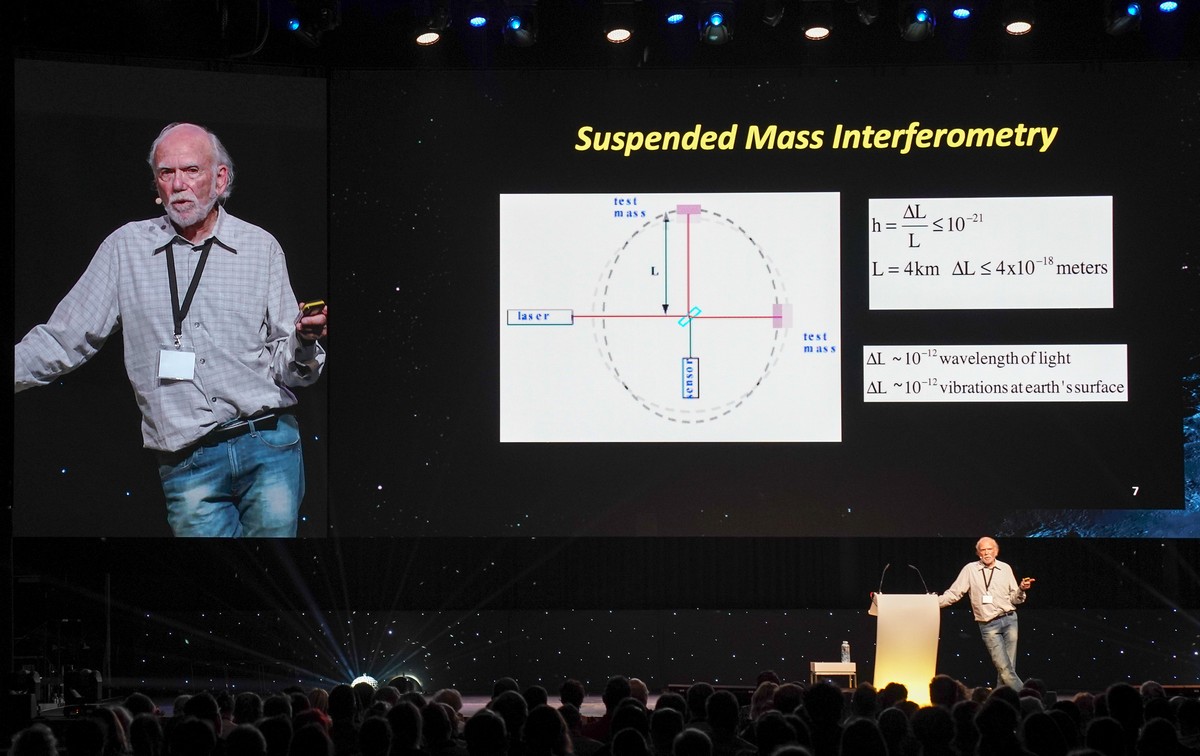
And – boom: they caught the first known instance of binary merging of two black holes:
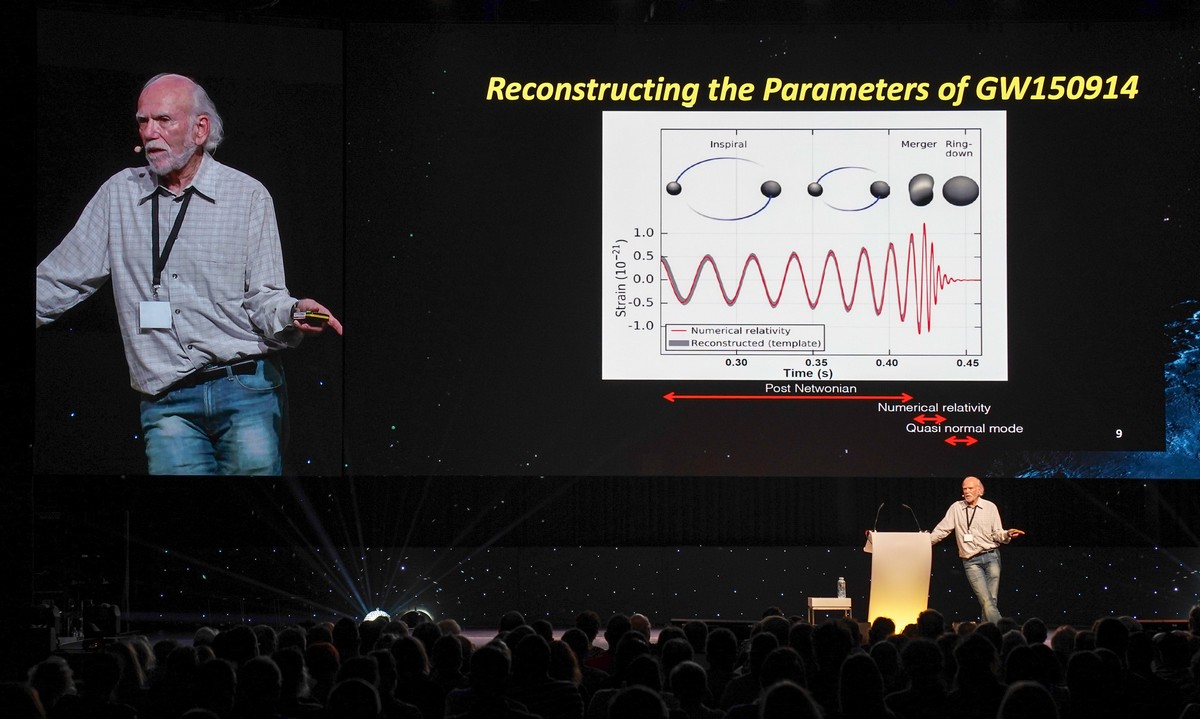
There have been quite a few of these to date:
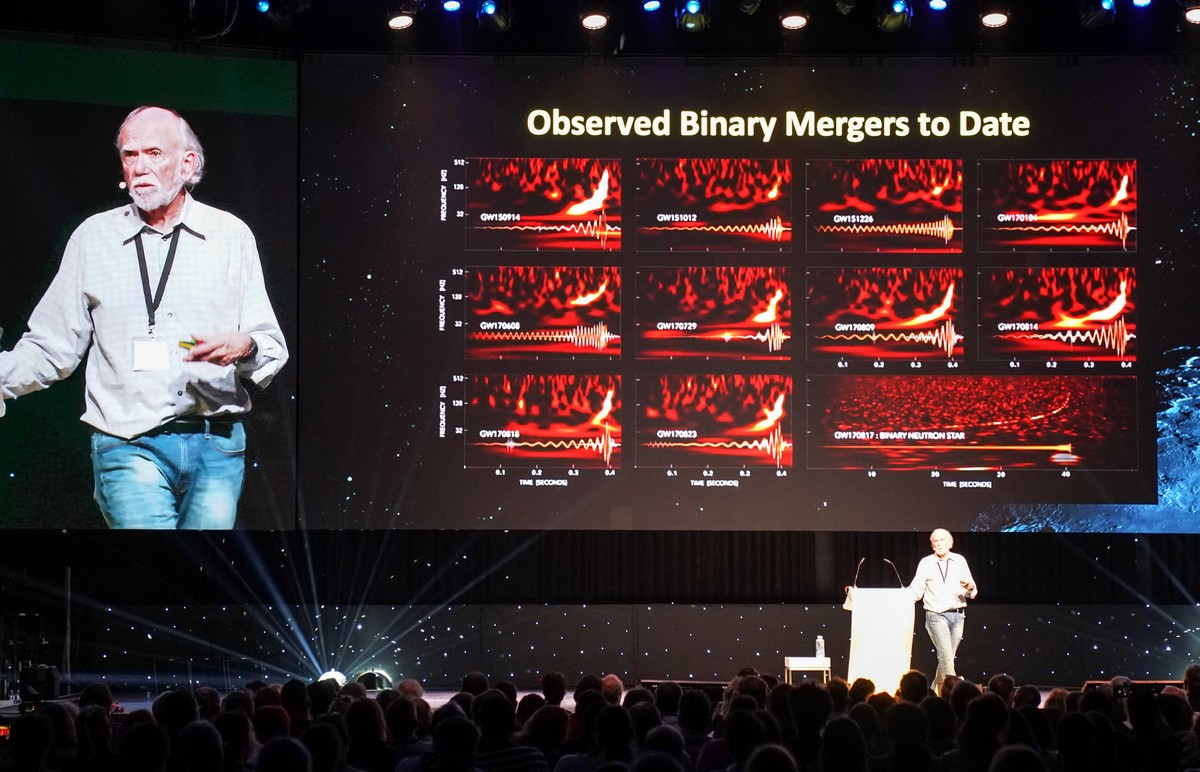
Yes, but if such events occur somewhere, then since gravitational waves (just like light) are the fastest (out of what is known; otherwise we’d leave the realm of the theories of good old Albert:), then we get this idea: if somewhere there’s a gravitational bang, it’s possible to try and determine where – and to then direct to that point in space all sorts of astronomical attention.
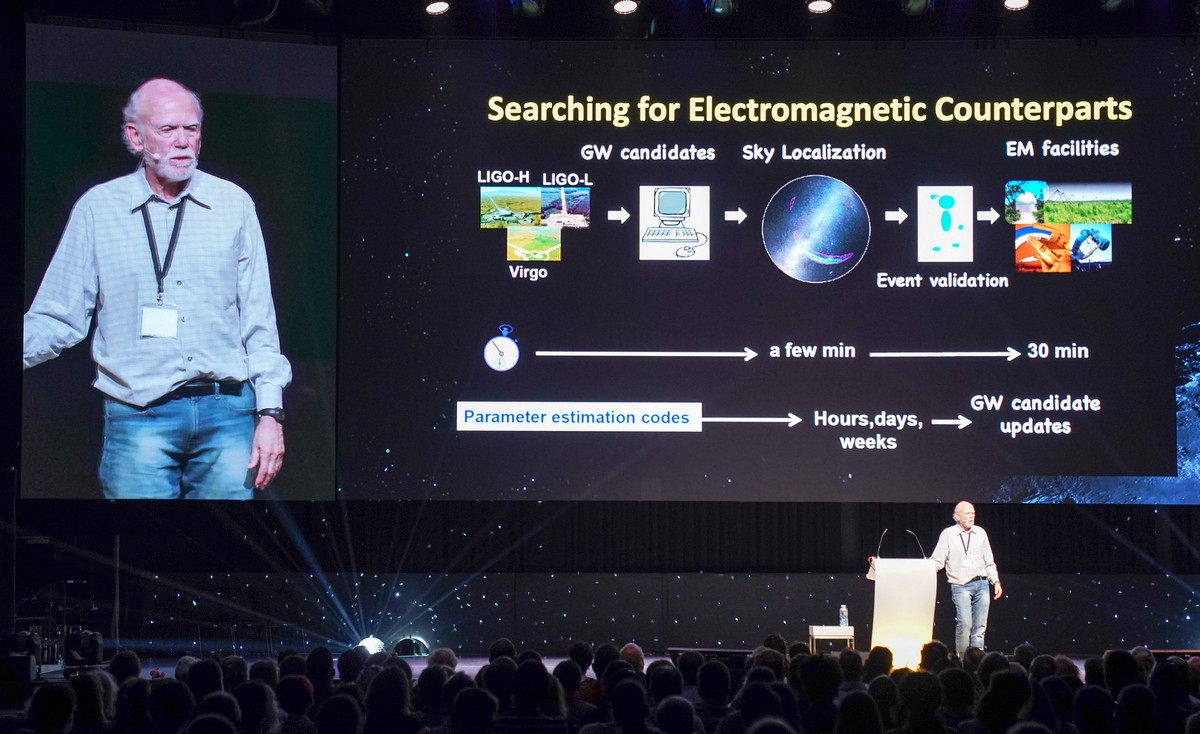
But just one LIGO won’t be enough. So they came up with another – Virgo – to record the time of the arrival of a gravitational wave, and as per these data try to work out where the bang took place.
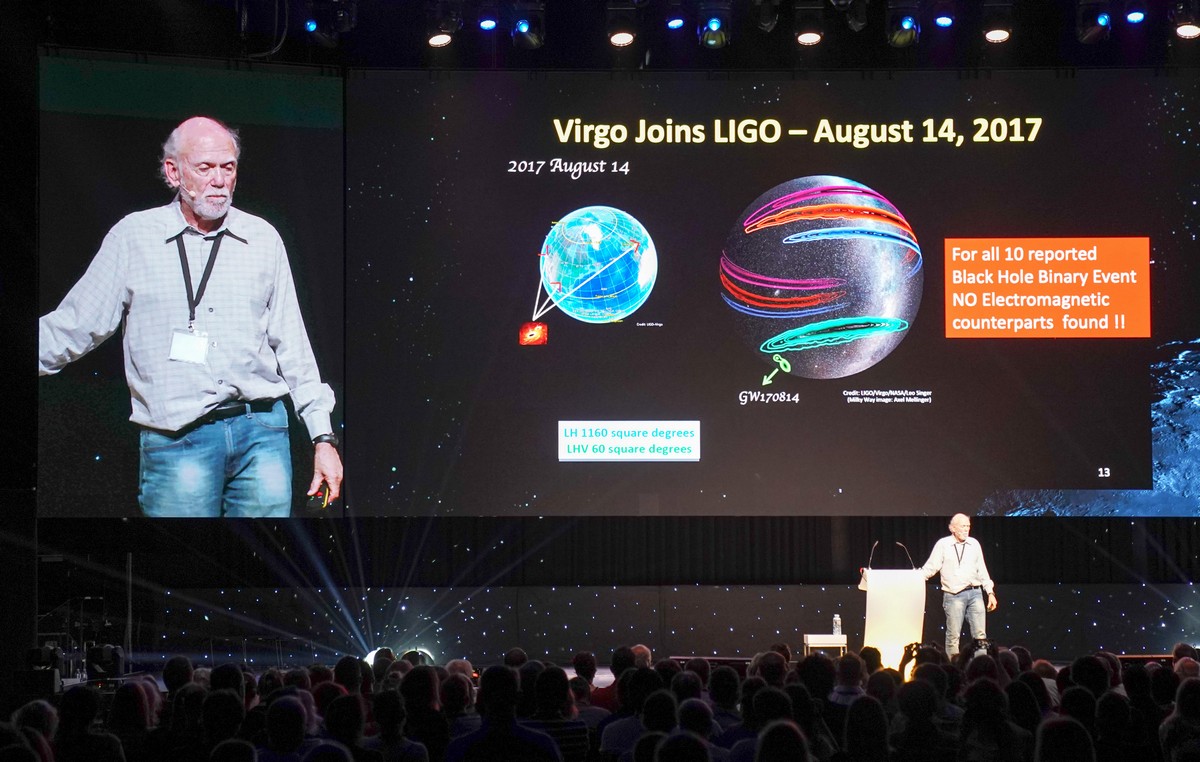
But it was still not enough. So they built something similar in France (I missed the details), and then things got going!…
Gravitational waves are now the ‘travel guide’ for astro-research of the far-cosmos. And lots has been found so far…
The world around us is beautiful, astonishing, mysterious. As is the space around it. And as science keeps on progressing and giving us more and more breathtakingly amazing details about the hows and whys of everything, things just keep on getting more and more interesting. So here’s to a pleasant – increasingly, intriguingly interesting – future. Cheers!
And that, folks, I do believe, is all from Starmus. Woah. Could this be my longest ever post? )













































































































































































